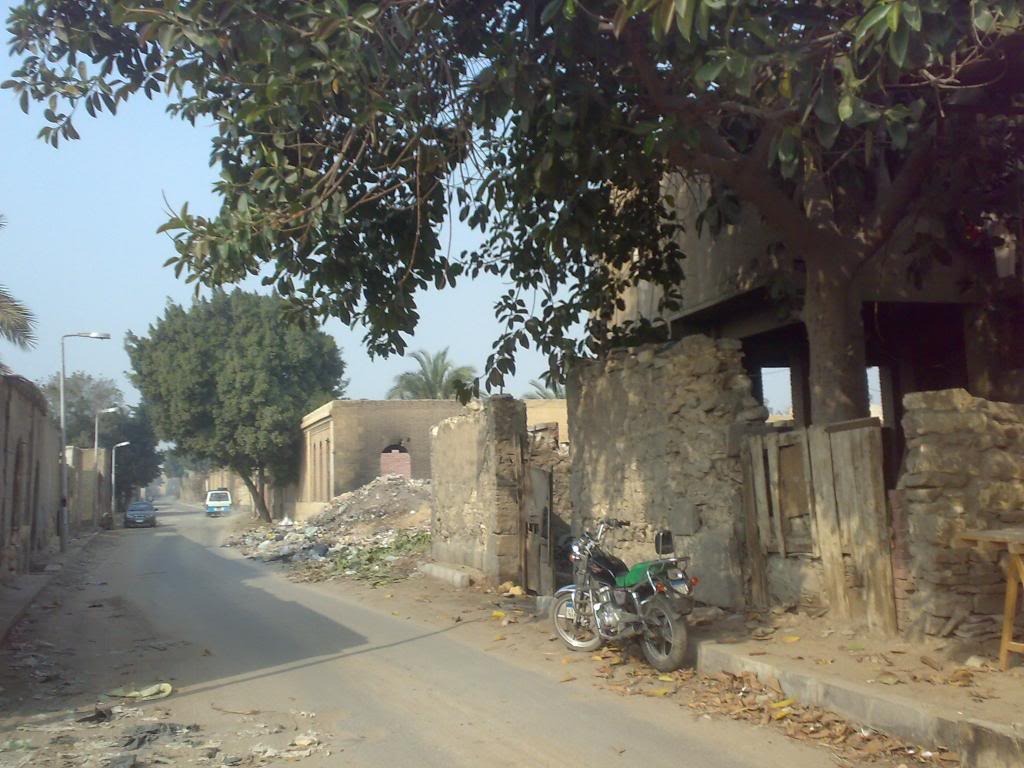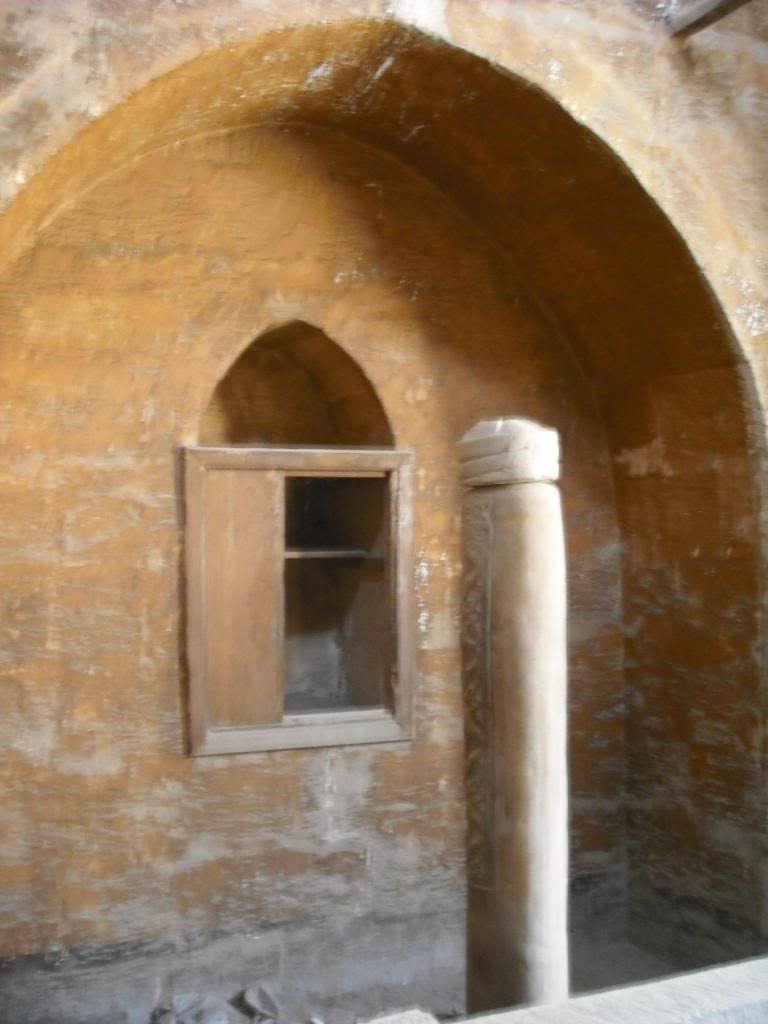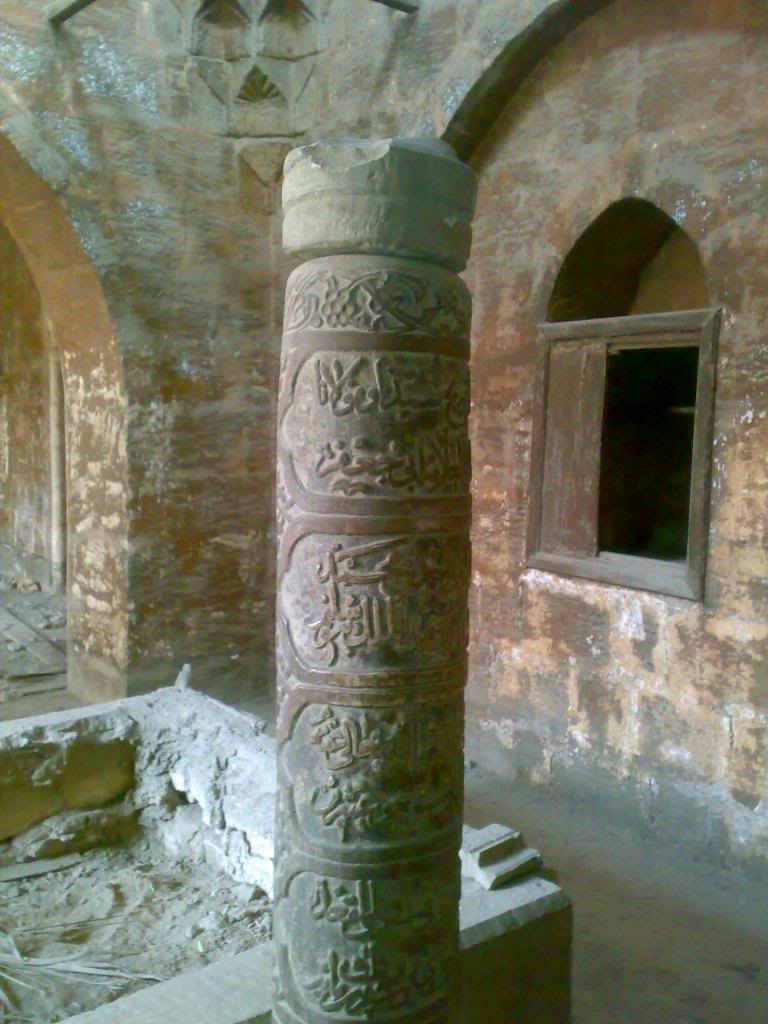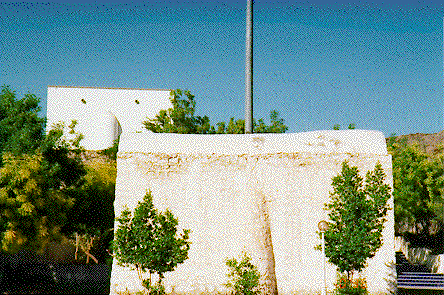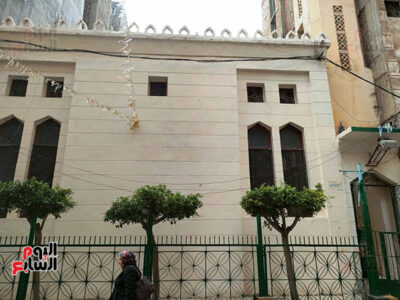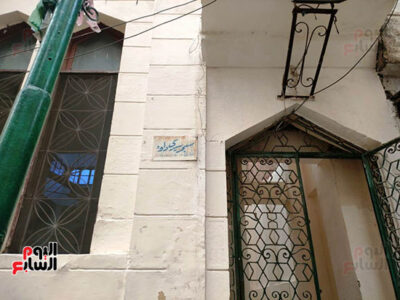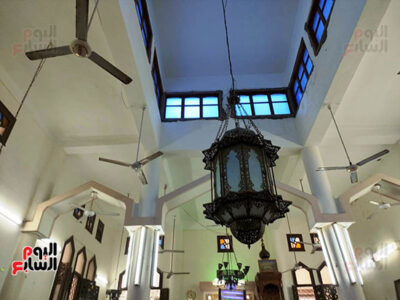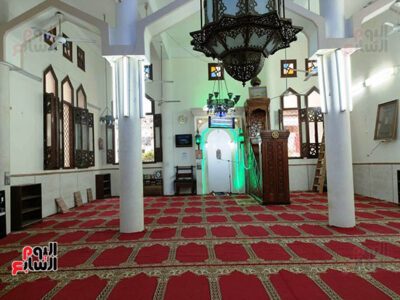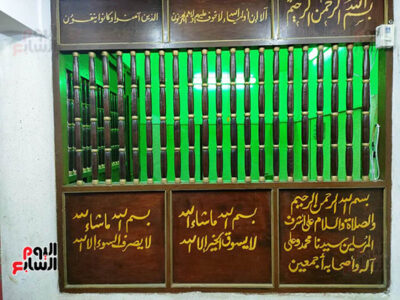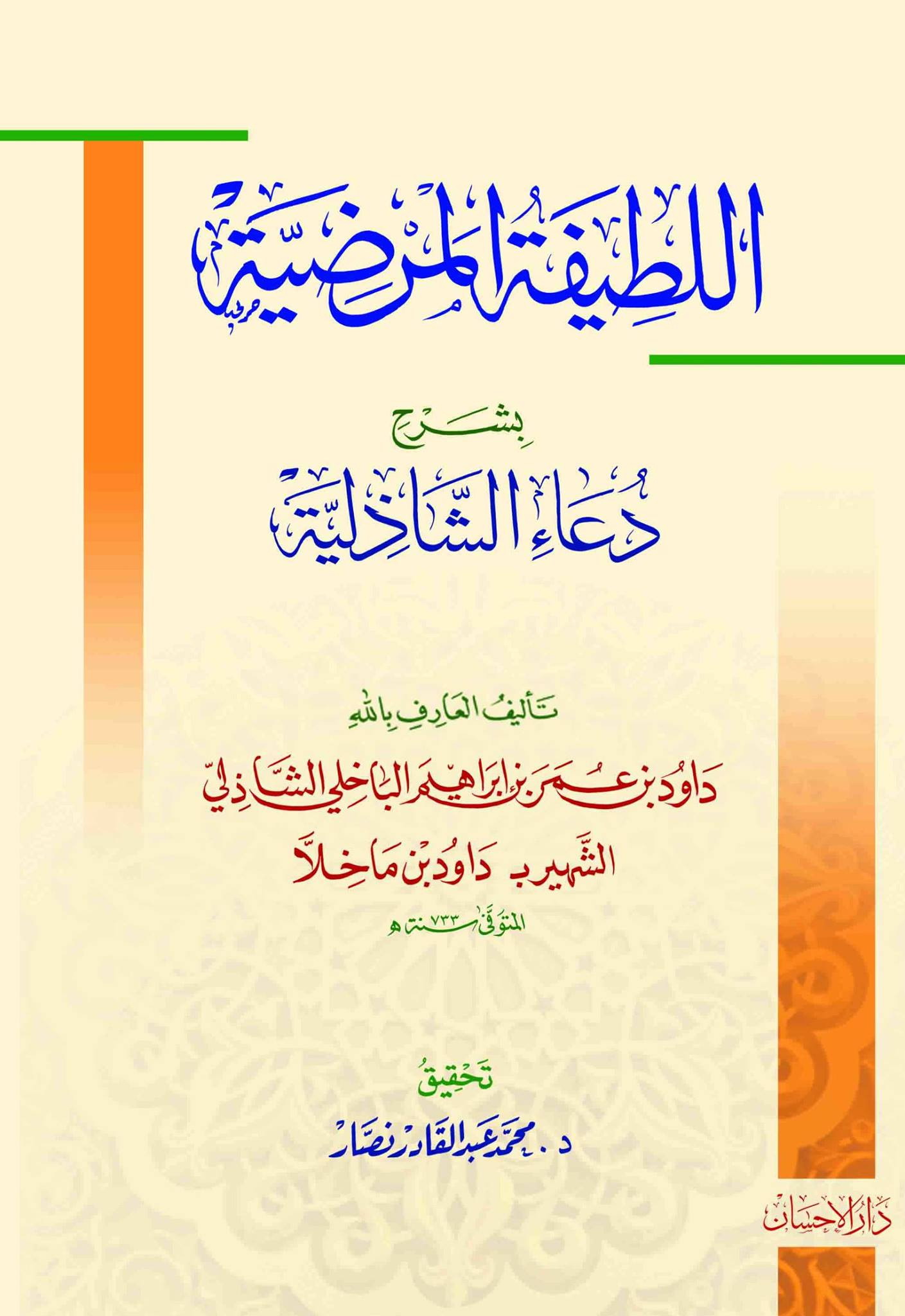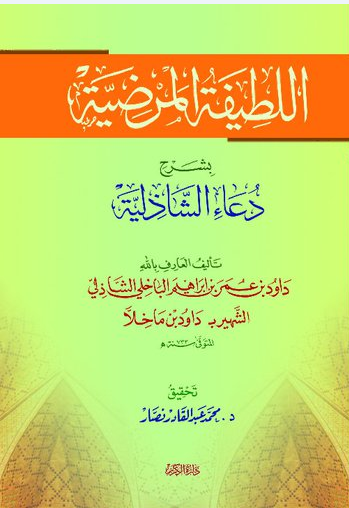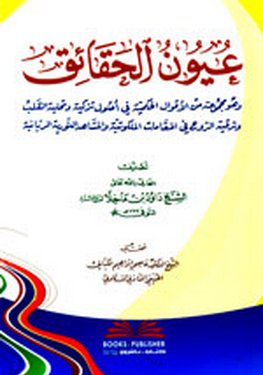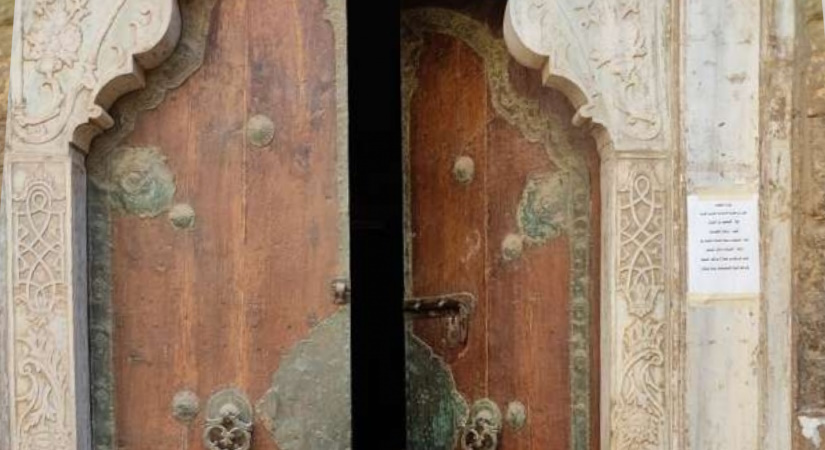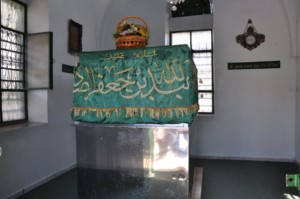153 Search results
Bio: Abu Ayyub al Ansari

Abu Ayyub al Ansari
أبو أيوب الأنصاريd.54 H. (674 CE) in Constantinopel (Istanbul)
Sahabi - radiya Allah anhu
Bio: Abu Shayba al Khudri

Abu Shayba al Khudri
أبو شيبة الخدري
d. 49 H. in Istanbul, Turkey (670 CE) sahabi
radiya Allah anhu
Bio: Dihya al-Kalbi

Dihya al-Kalbi
(sahabi d. 45 H. in Damascus)
radiya Allah anhu
﷽
Burial Place


References
© Damas Cultural Society 2007 — Latest update: 2009-03-22
Original site: damas-original.nur.nu
Bio: Habib ibn al-`Ajami

Sayyidi Habib ibn Mohammad al-‘Ajami
d. in Baghdad
Habib ibn Mohammad al-‘Ajami al-Basri, a Persian settled at Basra, was a noted hadith narrator who transmitted from al-Hasan al-Basri, Ibn Sirrin, and other authorities. His conversion from a life of ease and self-indulgence was brought about by al-Hasan’s eloquence; he was a frequent attendant at his lectures, and became one of his closest associates.
Bio: Ibn Daqiq al-‘Id | الإمام ابن دقيق العيد

Imam Ibn Daqiq al-'Id
الإمام أبو الفتح تقي الدين بن دقيق العيدb 625 H. in Hijaz – d. 702 H. in Cairo (1228-1302 CE)
Bio: Imam al-Sha’rani | الإمام الشعراني

Sh. 'Abd al-Wahhab al-Sha'rani al-Shadhili
القطب الإمام أبو المواهب شرف الدين عبد الوهاب بن أحمد بن علي الشعراني الأنصاري الشافعيd.973 H. (1565 CE) in Cairo
radiya Allah ‘anhu
Bio: Imam Al-Suyuti | الإمام جلال الدين السيوطي

Imam al-Suyuti
الإمام الحافظ عبد الرحمن بن أبي بكر بن محمد جلال الدين السيوطيb. 849 in Cairo - d. 911 H. in Cairo
Bio: Imam Al-Tahawi | الإمام الطحاوي

Imam Abu Ja´far al-Warraq Al-Tahawi
الإمام أبو جعفر اوراق الطحاويb. - d. 321 C. H. in Cairo
may Allah be pleased with him
﷽
English
عربي
From Siyar al-A’lam View | Download
From Tarwid al-Mihan – ترويض المحن View | Download | Read online: Open | Close
وهاكذا نرى أن أبا جعفر ولد وأمضى نعومة أظفاره فى عهد اتصف بالعدل والورع والتقوى وكان ذلك بمدينة طحا التى نسب إليها وطحا من المدن المصرية القديمة ذكرها جوتيية فى قاموسه فقال : أن اسمها المصرى ( تيهر ) والقبطى ( توهو ) ومنها اسمها العربى طحا وقال اميلنوا إن اسمها اليونانى والرمانى هو ووردت فى كتب الجغرافيين العرب طحا كورة بمصر الصعيد فى غربى النيل ويضيف البعض فيقول من أعمال الاشمونين والبعض الآخر يقول من أعمال البهنساوية ويصفها الإدريسى فيقول : وهى من مدن الصعيد مشهورة يعمل بها وفى طرزها ( اى مصانع النسيج ) ستور صوف وأكسية صوف منسوبة إليها . ويقول ابن خلكان : كان أبو جعفر الطحاوى شافعى المذهب فى اول أمره يقرأ على شيخه اسماعيل بن يحيى بن اسماعيل بن عمر بن اسحق المزنى صاحب الإمام الشافعى فقال له يوما والله لا جاء منك شىء فغضب أبو جعفر من ذلك وانتقل الى شيخ آخر هو أبو جعفر بن أبى عمران الحنفى واشتغل عليه فلما صنف مختصره قال رحم الله أبا ابراهيم يعنى المزنى لو كان حيا لكفر عن يمينه .
Books
• «الشفا بتعريف حقوق المصطفى – ط»
• و «الغنية – خ» في ذكر مشيخته،
• و «ترتيب المدارك وتقريب المسالك في معرفة أعلام مذهب الإمام مالك – ط» أربعة أجزاء وخامس للفهارس،
• و «شرح صحيح مسلم – خ» [ثم طُبع]
• و «مشارق الأنوار – ط» مجلدان، في الحديث،
• و «الإلماع إلى معرفة أصول الرواية وتقييد السماع – ط» في مصطلح الحديث وكتاب في «التاريخ».
كتب المصنف بالموقع
Burial Place
Map
Bio: Imam al-Tirmidhi

Imam Abu ´Isa Muhammad b.´Isa al-Tirmidhi
الإمام محمد بن عيسى بن سورة الترمذي
b. 209 – d. 279 H. in … ( CE)
radiya Allah anhu
﷽
Author of one of the six canonocal hadith collections
English
Imam Tirmidhi (209 – 279 H)
By Dr. G.F. Haddad
Imam Tirmidhi was born in the year 209 A.H. during the reign of the Abbasid Khalifa Ma’mun al-Rashid. The Abbasid Caliphate, despite its brilliant contributions to Islam, brought along with it many thorny problems. Greek Philosophy had a free flow into the Islamic world. This was fully sanctioned by the government until eventually it declared the Mu’tazila school of thought as the state religion. Anyone who opposed the Mu’tazila school of thought would be opposing the state. With the influence of Greek philosophy infiltrating within the people, many Muslims began attempting to reconcile between reason and revelation. As a result they deviated themselves and misled many innocent weak Muslims away from Allah and His Prophet (s). Many scholars of Islam had come to the fore in order to defend the Shari`ah. Forgeries and interpolations in Hadith by rulers who wished to fulfil their personal motives was common. In the first century `Umar bin Abdul `Aziz (r) initiated a movement for the compilation of the holy hadith of the the Prophet (s) as there was a fear of it being lost. Eventually this gigantic task was undertaken by six towering scholars of Islam. One of them was Imam Abu `Isa Muhammed ibn `Isa Tirmidhi
Having grown up in an environment of learning, together with possessing many great qualities naturally drove Imam Tirmidhi to dedicate his life totally towards the field of Hadith. He obtained his basic knowledge at home and later travelled to far off lands in search of this great science. He studied Hadith under great personalities such as Imam Bukhari, Imam Muslim and Imam Abu Dawud. In some narrations Imam Bukhari and Imam Muslim are his students as well.
Once Imam Bukhari mentioned to him “I have benefited more from you than you have benefitted from me.” Musa ibn `Alaq once said: “When Imam Bukhari passed away, he left no one in Khurasan who compared with Abu `Isa Tirmidhi in knowledge, memory, piety and abstinence.” According to `Abdullah ibn Muhammed Al-Ansari, Imam Tirmidhi’s Al-Jami` is more beneficial than the works of Bukhari and Muslim since their compilations can only be understood by a very deep sighted scholar whereas Al-Jami` can be understood by both the scholar and the layman.
Imam Tirmidhi said that he compiled this book and presented it to the learned of Hijaz, Iraq and Khurasan and they were pleased with it. Who ever has this book in his home, it is as though he has the Prophet (s) speaking to him there.
His remarkable memory:
Imam Tirmidhi had an exceptionally remarkable memory. If he heard something once he never forgot it. Once on his way to Makkah, Imam Tirmidhi met a scholar of hadith (muhaddith) from whom he had previously copied two chapters of hadith. Thinking that he had the notes with him he asked the scholar if he would allow him to read out these two chapters so that he could correct any errors. After realizing that he did not have those notes with him he took a blank piece of paper and read out the entire two parts from memory. When the muhaddith realized what he was doing he rebuked Imam Tirmidhi saying: “Have you no shame, why are you wasting my time.” Imam Tirmidhi assured him that he had committed all the ahadith to memory. The scholar was not convinced, even though Imam Tirmidhi had recited all the hadith from memory. Imam Tirmidhi requested him to recite to him some other hadith. The scholar recited forty ahadith which Imam Tirmidhi thenrepeated without making a single error, thus showing his remarkable power of committing hadith to memory.
Another incident has been recorded by Hakim ul-Ummat in his Al-Misk-us-Zaki, depicting the profound memory of Imam Tirmidhi. He writes:
Imam Tirmidhi had lost his sight towards the latter portion of his life. Once whilst on a journey, at a certain point he bowed his head. When asked as to why he did this, he replied: “Is there not a tree here whose branches hang over in such a manner that it harms those who are passing by.” They answered in the negative. He was quite shocked when he heard this as he distinctly remembered there being a tree and was worried as to whether his memory was failing him or not. He stopped the caravan immediately and asked his companions to enquire from the locals whether a tree had existed there or not. “If it is established that no tree existed then I will stop narrating the Hadith of the Prophet (s) due to my weak memory.” On inquiry it was shown to them that a tree had previously existed over there but due to it being a hindrance to travelers it was removed.
Imam Tirmidhi had a large number of students from all over the world. The most famous amongst them were Haysam ibn Kulaib, Abul Abbaas and Muhammed ibn Ahmed Shah Abdul `Aziz describes Imam Tirmidhi in the following words: “His memory was unique and his piety and fear of Allah ta’la was of a very high caliber. He would cry so much out of the fear of Allah, that towards the end of his life he lost his sight.”
According to Ibn Taymiyya and Shah Waliullah, Imam Timidhi was an independent Jurist (Mujtahid). Moulana Anwar Shah Kashmiri is of the opinion that he was a Shafi`i.
In the year 279 A.H. in a village called Bawag at the age of 70 , Imam Tirmidhi left this temporary abode for the everlasting life of the hereafter. May Allah swt fill his grave with light. The enormity of his sacrifices and the extent to which he served the religion can never be fully comprehended.
Many books of hadith were compiled before Imam Tirmidhi decided to compile his Al-Jami`. Dawud Tayalisi and Ahmed ibn Hanbal had compiled books consisting of both authentic and weak hadith. Later Imam Bukhari compiled his Sahih and omitted all weak narrations from it. His main objective was to derive masa’il / laws from the relevant hadith. Later Imam Muslim compiled his book with a primary focus on the isnad (different chain of narrators). Imam Nasa’i’s aim was to mention the discrepancies of the hadith whilst Abu Dawud prepared a book which became the basis for the fuqaha. Imam Tirmidhi had combined the styles of Bukhari, Muslim, Abu Dawud and Nasa’i by mentioning the discrepancies regarding the narrators and also making his compilation a basis for the jurists.
The Special characteristics of al-Jami` ut-Tirmidhi
1. It is a Sunan and a Jami`.
2. Only 83 hadith are repeated.
3. Imam Tirmidhi omits the major portion of the hadith and only mentions that part which is relevant to the heading. (title)
4. After mentioning a hadith he classifies it narration (whether it is authentic or weak, etc.)
5. He specifies the narrators names, e.g. if the narrators kunya (honorific name) was mentioned, he would then mention his proper name and vice versa.
6. One hadith in Tirmidhi is a thulaathiyaat i.e. the transmitters of the hadith betwen Imam Tirmidhi and the Prophet (s) are only three.
7. Every hadith in Tirmidhi al-Jami` is “ma’mul bihi” (practised upon by the jurists.)
8. He explains the different madhahib together with their proofs.
9. He gives an explanation to all difficult ahadith.
10. His book has been set out in an excellent sequence, hence to look for a hadith is very easy.
11. There is no fabricated hadith in the entire book.
The conditions of Imam Tirmidhi in the selection of hadith
According to the commentators of Al-Jami Imam Tirmidhi maintained the following conditions throughout the compilation of his book.
1. He never narrated hadith from those who fabricated hadith. 2. Allama Tahir Muqaddisi mentions that al-Jami` ut-Tirmidhicontains four types of hadith:
[1] Those ahadith that conform with the conditions of Bukhari and Muslim. [2] Those ahadith that conform with the conditions of Abu Dawud and Nasa’i. [3] Those ahadith that have certain discrepancies either in the sanad or matan. [4] Those weak hadith that some fuqaha have relied on.3. Imam Tirmidhi accepts a hadith which is narrated with the word “a’n” provided both the narrators are contemporaries. 4. After mentioning a weak hadith, he explains the state of its weakness. 5. A mursal hadith is accepted by Imam Tirmidhi when it is supported by a chain of narrators which is not broken.
The status of al-Jami` ut-Tirmidhi among the six authentic books of hadith. al-Jami` ut-Tirmidhi has been categorized as fifth amongst the six most authentic books of hadith. According to the most preferred opinion, Bukhari enjoys the highest status, followed by Muslim, Abu Dawood, Nasai, Tirmidhi and Ibn Majah respectively. Haji Khalifa in al-Kashf al-Dhunoon has categorised Tirmidhi in third position. Al-Dhahabi has written that Tirmidhi in actual fact should be holding the third position, but due to him bringing weak narrators like Kalbi and Masloob its status has dropped. However, looking at the manner in which he set out his book it seems that Haji Khalifa’s opinion is best.
Some of the commentaries of Tirmidhi
{1.} ‘A’ridat-ul-Ahwazi
An Arabic compilation of Qadi Abu Bakr ibn `Arabi (r) in 7 volumes.
{2} Qut-ul Mughtazi
Compiled by Jalal ad-Din Suyuti (r).
{3} Tuhfat-ul Ahwadhi
Written by Sheikh Abdur Rahmaan Mubaarakpuri in 10 volumes. He is very critical against the Ahnaaf.
The Terminology of Imam Tirmidhi
The classification of hadith was firmly established by Ali ibn Madini (r) and later by his student Imam Bukhari (r). However Imam Tirmidhi was the first Imam to base his book on these classifications.
Imam Tirmidhi classifies most of the Ahadith and mentions its reliability. Altogether Imam Tirmidhi uses nine different terms.
1.) sahih: That hadith wherein each reporter must be trustworthy, he must have the power of retention and the sanad of the hadith must go back to Nabi (sallallahu alyhi wasallam) without any interruption, it must agree with those of other reliable reporters and there should be no hidden defect in the matan or the sanad. N.B. Imam Tirmidhi does not consider it a prerequisite that a sahih Hadith must have several chains of narrators.
2.) hasan: That hadith which does not contain a reporter accused of lying, it is not shaaz and the hadith has been reported through more than one sanad.
3.) da`eef: Such a hadith wherein the narrators are not trustworthy, or they don’t posses the ability of retaining, or there is a break in the chain of narrators, or the hadith is shaaz or mu’alall.
4.) gharib: According to Imam Tirmidhi a hadith is classified gharib for one of the following reasons..
(a) it is narrated from one chain only.
(b) there is some addition in the text.
(c) it is narrated through various chains of transmitters but having within one of its chains an addition in the sanad.
5.) hasan gharib: These two can be combined. i.e. hasan refers to the uprighteousness of the narrators whilst gharib implies that he is alone in transmitting the hadith.
6.) sahih gharib: This term implies that the hadith is authentic but there is only one sanad.
7.) hasan sahih gharib: This hadith is hasan since it has several chains of transmitters, it is sahih as the chains are all authentic and it is gharib in the words that Imam Tirmidhi narrated.
8.) hasan sahih: This term has caused much confusion amongst the Muhadditheen since hasan is lower in rank than sahih. While sahih indicates to the excellent retention power of a narrator, hasan indicates to a deficiency in this regard hence it seems that both are opposites and is not possible to reconcile. The mutaqaddimeen have given many explanations to this :
[1] Ibn Hajar (r) has mentioned that the word “aw” is omitted hence the hadith will be either hasan or sahih. [2] Ibn Salah is of the opinion that when a hadith is reported with two sanads, one should be considered as hasan and the other as sahih. [3] Ibn Kathir says that Imam Tirmidhi has made up a new term which implies the hadith to be higher than hasan but lower than sahih. [4] Ibn Daqiq ul `Eid is of this opinion that sahih and hasan are not opposites. Rather they belong to the same category. However hasan will be considered as inferior to sahih hence they both can be combined. This opinion has been given most preference by the Muhadditheen.CONCLUSION
By the third century A.H. a number of collections on hadith were compiled. Imam Tirmidhi was one of those scholars who contributed greatly towards this field of hadith. In this modern age the world at large is deeply indebted to Imam Tirmidhi for his compilation of hadith. May Allah swt make it possible for all of us to benefit tremendously from this priceless collection of hadith.
عربي
Books
Burial Place
Imam al-TIrmidhi died on Monday night, 13 Rajab 279 AH (Sunday night, 8 October 892) in Bugh. He is buried on the outskirts of Sherobod, a 60 kilometers north of Termez in Uzbekistan. [wiki]
Bio: Jamil Buthayna
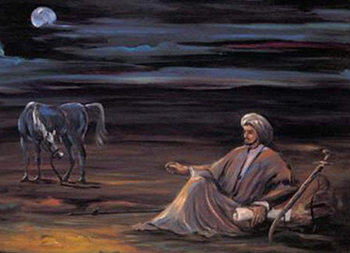
Jamil b. ´AbdAllah b. Ma´mar
(known as Jamil Buthayna)
b. in Hijaz – d. 82 H. in Misr
Bio: Mawlay Idris II – The Founder of Fas

Moulay Idris II – Founder of the City of Fas
سيدنا ومولانا إدريس الأزهرb. 157 H. – d. 213 H. in Fas
Bio: Qadi ´Iyad
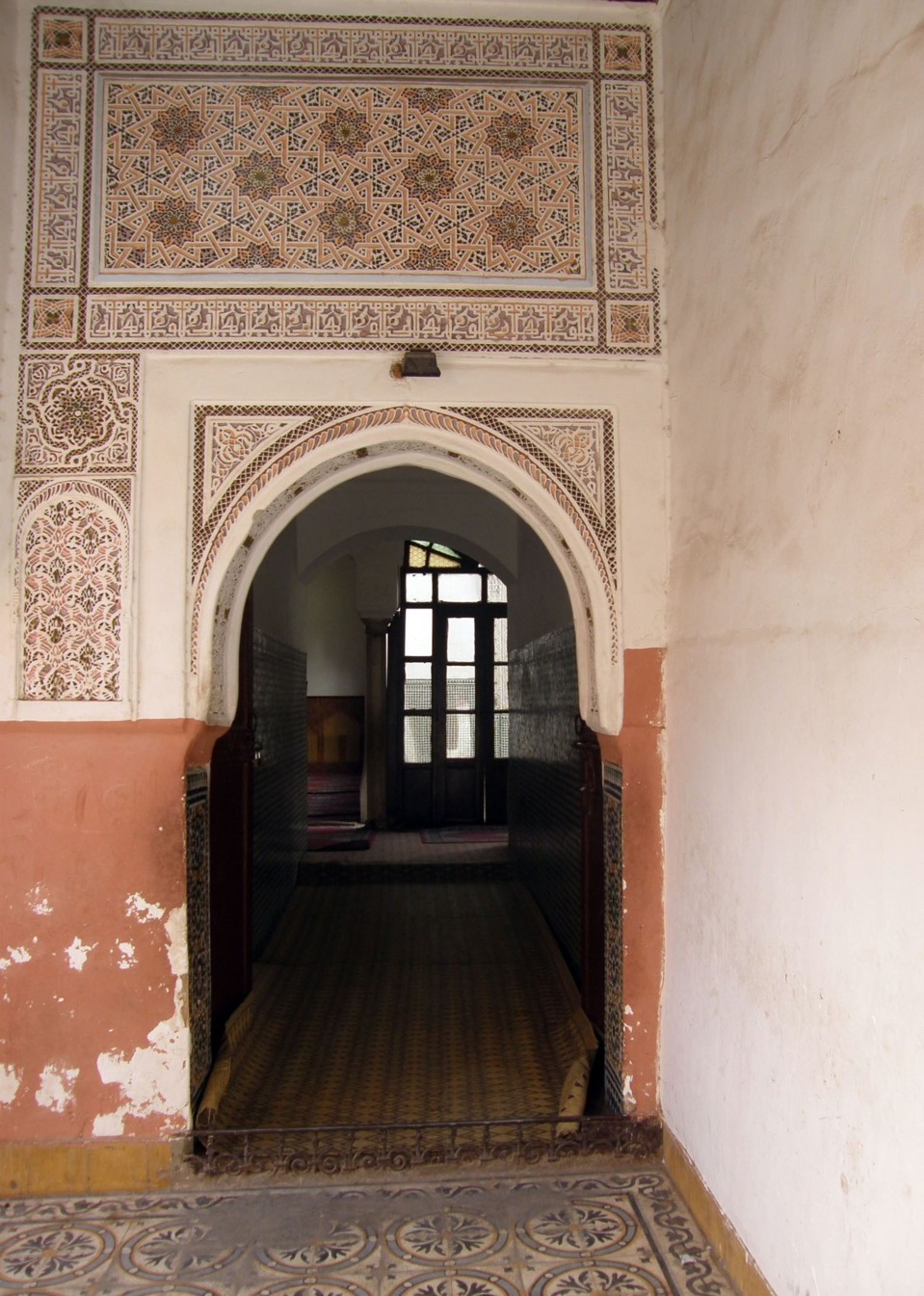
Qadi ´Iyad
القاضي عياض بن موسى بن عياض اليحصبي
b. 476 – d. 544 H. in Marrakesh (1083 – 1149 CE)
may Allah be pleased with him
﷽
English
Among the great Moroccan influential advocates of the cult of the Holy Prophet (peace and blessing be upon him) is the Patron Saint of Marrakech Sidi al-Qadi Abul Fadl Iyyad ibn Musa al-Yahsubi al-Sabti al-Maghribi (d. 544/1129), the premier Hadith scholar of the late Almoravid period and qadi al-jama’a of the cities of Granada and Sabta (“current occupied Ceuta, may Allah turn it to Dar al-Islam). A famous adage, of whom it was said, “Were it not for Iyyad Morocco would not have been mentioned,” the Qadi’s most famous work, Kitab Shifa bita’rif huquq al-Mustapha (The Antidote in knowing the rights of the Chosen Prophet), is a tradition based treatise that promotes the veneration of the Chieftain of the Universe, the Reason of Existence, the Seal of Prophethood and Messengership, Sidna Mohammed ibn Abdellah (peace and blessing be upon him) as the universal archetype of humanity. Al-Qadi Iyyad portrays the Holy Prophet (peace and blessing be upon him) as a mortal man who was blessed with superhuman qualities. Although he acknowledges that the Holy Prophet (peace and blessing be upon him) had human limitations, he restricts these to the Prophet’s outward or bodily aspects alone. With respect to his inner qualities, the Prophet had more in common with the divine than with other of his species. This is proven of Qadi Iyyad by the Prophet’s enjoyment of divine protection and his freedom from major sins and weaknesses. For al-Qadi Iyyad, Holy Prophet’s al-qudwa al-‘hasana (beautiful example) is a paradigm for religious and nonreligious behaviour alike. Thus the Prophet’s actions exemplifies the best of human undertakings: “the best manner of living, the most efficacious teaching, the most useful knowledge, and the finest of personal attributes”. Since many of these qualities pertain to the prophet’s inborn nature and cannot be duplicated by other human beings, al-Qadi Iyyad urges his readers to instead immolate Sidna Mohammed’s acquired virtues, such as his generosity, forebearness, bravery, good fellowship, moral standards, justice, asceticism, and God-consciousness.
عربي
From Tarwid al-Mihan – ترويض المحن View | Download | Read online: Open | Close
هو الإمام العلامة الحافظ الأوحد، شيخ الأندلس والمغرب، وفريد عصره، شيخ الإسلام، القاضي عياض بن موسى بن عياض بن عمرو اليحصبي الأندلسي ثم السبتي المالكي، وُلد 476هـ بمدينة سبتة المغربية (وهي ما زالت واقعة حتى الآن تحت الاحتلال الإسباني)، وكان جده عمرو قد هاجر من الأندلس إلى المغرب أيام ملوك الطوائف، وسكن مدينة سبتة، وبها وُلد القاضي عياض.
لم يحمل القاضي عياض العلم في الحداثة كعادة كبار العلماء، بل طلبه بعد أن جاوز العشرين، وكان أول سماعه وطلبه للعلم إجازة مجردة من الحافظ أبي عليَّ الغسَّاني، ثم رحل إلى الأندلس سنة 503هـ، وسمع من شيوخها وعلمائها، وانقطع لطلب العلم، فاستبحر من شتى العلوم: الحديث والفقه، وعلوم اللغة، وتمر فيها حتى فاق معاصريه وشيوخه، وبذ الأقران، وجمع وألف، وناظر وأفتى، وسارت بتصانيفه الركبان، واشتهر اسمه في الآفاق، وتولى منصب القضاء في بلده سبتة مدة طويلة، حُمِدَتْ فيها سيرته، ثم نقل عنها إلى قضاء غرناطة، ومن شدة أهليته للمنصب ارتبط واقترن اسمه بقلب القاضي؛ على الرغم من صغر سنه، فلقد تولى القضاء وله خمس وثلاثون سنة فقط.
ثناء الناس عليه:
كان القاضي عياض من محاسن الدهر، وبركة العصر، وكلمة إجماع عند أهل العلم، رزقه الله عز وجل القبول عند الناس، فأنزلوه مكانه اللائق به في مصاف كبار علماء الأمة، وأثنوا عليه بما هو أهله، وهذه طائفة من أقوالهم:
قال ابن بشكوال تلميذه: هو من أهل العلم والتفنن، والذكاء والفهم، استقضى بسبتة مدة طويلة، حمدت سيرته فيها، ثم نقل إلى غرناطة، فلم يطول بها، ثم قدم علينا قرطبة فأخذنا عنه، واستفدنا منه كثيرًا.
قال الفقيه محمد بن حمادة السبتي: جلس القاضي للمناظرة وله نحو من ثمان وعشرين سنة، وولي القضاء وله خمس وثلاثون سنة، كان هينًا من غير ضعف، صليبًا في الحق، وقد حاز من الرئاسة في بلده والرفعة ما لم يصل إليه أحد قط من أهل بلده، وما زاده ذلك إلا تواضعًا وخشية لله تعالى.
قال ابن خلكان في وفياته: هو إمام الحديث في وقته، وأعرف الناس بعلومه، وبالنحو، واللغة، وكلام العرب، وأيامهم، وأنسابهم.
قال المؤرخ الشهير محمد بن عبد الله: وكان القاضي عياض من أكابر الحفاظ، ومن أعظم أئمة عصره في الحديث، وفي فهم غريبه ومشكله ومختلفه، بارعًا في علم الأصول والكلام، حافظًا للمختصر والمدونة، متمكنًا من الشروط والأحكام، أبرع أهل زمانه في الفتيا، متقنًا للنحو واللغة، أديبًا كبيرًا، وشاعرًا مجيدًا، حسن التصرف في النظم، كاتبًا بليغًا، وخطيبًا مفوهًا، عالما بالسير والأخبار، ولا سيما أخبار العرب و أيامها وحروبها، وكان حسن المجلس، ممتع المحاضرة، فصيح اللسان، حلو المداعبة، بسامًا مشرقًا، جم التواضع، يمقت الإطراء والملق، معتزًا بنفسه ومكانته، محبًا لأهل العلم، معاونًا لهم على طلبه، جوادًا، سمحًا، من أكرم أهل زمانه، كثير الصدقة والمواساة.
مصنفاته:
يعتبر القاضي عياض من أكثر علماء المغرب تصنيفًا وترتيبًا، وله ثبت حافل بالمؤلفات النفسية والفائقة، كلها بفضل الله عز وجل موجود ومطبوع، وهو من الأعلام القلائل الذين لم يفقد مؤلفاتهم شيء، على الرغم من المحنة الهائلة التي تعرض لها عندما اضطهدته السلطة، وهذا الحفظ الذي حفظه الله عز وجل لمؤلفات القاضي عياض دليل على عظم هذا الإمام ومكانته، وتأييد الله عز وجل له، وإعلاء ذكره وعلمه بين العالمين، أما عن أهم كتبه ومصنفاته فمنها:
• كتاب (الشفا في شرف المصطفى) وهو أجَّل كتبه وأنفعها وأشهرها، وقد أتى في الكتاب بالعجائب والفرائد والتأويلات البديعة، والمعاني الخفية اللطيفة، فجاء هذا الكتاب فريدًا بين كتب سيرة النبي صلى الله عليه وسلم، وقد شغف العلماء بهذا الكتاب، فوضعوا له الشروح والحواشي، وخرجوا أحاديثه، وحرروا ألفاظه، ولذلك الكتاب عدة طبعات بعدة شروح مختلفة، وبتحقيق أسماء مختلفة من أهل العلم، والكتاب لا يستغني عنه أي طالب علم، فضلا عن المتخصصين في السير والتاريخ.
• كتاب ((ترتيب المدارك وتقريب المسالك في ذكر فقهاء مذهب مالك)).
• كتاب ((العقيدة)) في بيان عقيدة أهل السنة والجماعة، وقد شرح فيه عقيدته السلفية الصحيحة.
• كتاب شرح حديث أم زرع، واسمه (بغية الرائد فيما في حديث أم زرع من الفوائد)، وقد ذكر فيه طرق الحديث، وما يتعلق بها، ثم ذكر على طريق الإجمال فيه من العربية والفقه والغريب، وما اشتمل عليه من ضروب الفصاحة، وفنون البلاغة والبديع، ويعد هذا الشرح من أعظم كتب البلاغة التطبيقية في الكتب العربية، وقد أثنى عليه الحافظ ابن حجر كثيرًا في الفتح.
• كتاب ((مشارق الأنوار في اقتفاء صحيح الآثار)) وهو في تفسير غريب الحديث، وضبط ألفاظه رتب فيه الكلمات على ترتيب حروف المعجم المعروف ببلاد المغرب بحسب حرفها الأول، ثم الثاني وهكذا، وهو من الكتب العظيمة النافعة.
• كتاب ((جامع التاريخ)) الذي أربى على جميع المؤلفات، جمع فيه أخبار ملوك الأندلس والمغرب، واستوعب فيه أخبار سبتة وعلمائها.
• كتاب ((الإكمال في شرح صحيح مسلم)) أكمل به كتاب ((المعلم)) للإمام المازري.
• كتاب ((الإلمام إلى معرفة أصول الرواية وتقييد السماع)).
• كتاب ((التنبيهات))، كتاب ((الإعلام بحدود قواعد الإسلام)).
محنته:
وُلد القاضي عياض كما ذكرنا سنة 476 بسبتة، التي كانت وقتها تحت حكم دولة المرابطين العظيمة، وهذه الدولة كانت من أعظم الدول الإسلامية التي ظهرت في بلاد المغرب عبر عصورها جميعًا، فلقد كانت دولة مجاهدة من الطراز الأول، حققت في هذا المضمار الكثير من الفتوحات والإنجازات الخالدة، وكان لها الفضل في نشر الإسلام في غرب ووسط القارة الإفريقية، حتى إن راياتها الميمونة قد وصلت إلى منتهى نهر النيجر، وبلاد الكاميرون، وقلب نيجيريا، كما أنها كانت دولة بدوية ساذجة، غير متلوثة بأسباب الترف المهلك، والأهم من ذلك كله أنها كانت دولة سلفية المنهج والعقيدة، لا تعرف الطرق الكلامية، والمذاهب البدعية إلى أهلها سبيلا، وكان قادة وسلاطين وأمراء تلك الدولة يعظمون العلماء والفقهاء ويجلونهم، وما سقطت هذه الدولة العظيمة إلا عندما تسلل الترف والفساد إلى جنباتها.
في ظل تلك الدولة المجاهدة السلفية، وُلد ونشأ وترعرع القاضي عياض، وفي ظلها أيضًا تعلم وتمهر، وتقدم في شتى العلوم، وفي ظلها أيضًا صار القاضي عياض من أعلام العلماء، وكبار القضاة، ولأن هذه الدولة لم تعمَّر طويلا فإن القاضي عياض قد شاهد هذه الدولة، وفي عنفوان شبابها، وأوج قوتها، وأقصى اتساعها، ثم رآها وهي تندحر شيئًا فشيئًا، وتظهر فيها علامات السقوط: مثل الفساد والترف، ورآها أيضًا وهي تهزم المرة بعد الأخرى أمام جيوش مدعي المهدية ابن تومرت، والملقبين بالموحدين، مما كان يؤذن بأفول شمس هذه الدولة، وخروجها من ساحة الأحداث إلى ثبت الذكريات.
تولى القاضي عياض منصب القضاء سنة 510هـ في مدينته ((سبتة))، وكان في الخامسة والثلاثين، وكانت أولى علامات الفساد بدأت في الظهور في جنبات الدولة المرابطية، وكانت تلك العلامة هي الوساطة والشفاعة لبعض الناس، والمحسوبية لهم على حساب الآخرين؛ فتصدى القاضي عياض لتلك الآفة، وسار في ولايته بمنتهى النزاهة والأمانة، وأبدى حزمًا في تطبيق الحدود والأحكام، واشتهر بين الناس بغزير علمه وحفظه، وصدق طريقته، ودقة فتياه، وحياديته الكاملة، حتى طارت شهرته في كل مكان.
هذه الشهرة بكل خير جعلت أمير المسلمين – وهو لقب المرابطين ((عليٍّ ابن يوسف بن تاشفين)) – يوليه قضاء غرناطة بالأندلس، ليصلح من شأنها، نظرًا لانتشار المفاسد بين أهلها، وكثرة القلاقل والاضطرابات بها، فتولى القاضي عياض قضاء غرناطة في سنة 531هـ، فقام به خير قيام، وأعرض عن الشفاعات والمؤثرات، وردع أرباب الولايات وأتباع السلطان عن الباطل، وعزل كل من ثبتت عدم أهليته وكفايته من منصبه، فشرد كثيرًا من حاشية والي الأندلس ((تاشفين بن علي)) عن أعمالهم ومناصبهم، فاستاء منه الأمير تاشفين بن علي، وضاق به ذرعًا، خاصة والقاضي عياض يرفض رفضًا تامًّا أي تدخل في عمله، وأية محسوبية أو وساطة، حتى ولو كانت من الأمير نفسه، فالقاضي عياض عالم ربانيٌّ، يؤثر الحق ومرضاة الخالق على ما سواهما، كائنًا ما كان، فسعى الأمير تاشفين بن علي عند أبيه أمير المسلمين (( علي بن يوسف))، حتى يصرف القاضي عياض عن منصبه، وبالفعل تم مراده، وعُزل القاضي عياض عن منصبه في رمضان سنة 532هـ.
لم يَفُتُّ هذا العزل في عضد القاضي عياض، ولم ينل من مكانته ولا قدره، فعاد إلى مدينته سبتة، وعكف فيها على التدريس والفتيا ونشر العلم، ثم طلب منه أمير المرابطين ((تاشفين بن علي)) سنة 539هـ أن يلي منصب القضاء في سبتة، وكانت أحوال دوله المرابطين قد تدهورت بشدة، واكتسحت جيوش الموحدين معظم ولاياتها في المغرب؛ فأراد ((تاشفين بن علي)) رجالاً صالحين وأشداء في تلك المناصب الحساسة لوقف تدهور الدولة المرابطية أكثر من ذلك، وسبحان الله: كم لله عز وجل في خلقه من شئون؛ فتاشفين بن علي هو الذي اجتهد أول مرة لعزل القاضي عياض عن منصبه، وهو نفسه الذي اجتهد لإعادته لنفس المنصب، وذلك عندما احتاج لعلمه وزهده ونزاهته.
بلغ الكتاب أجله، وسقطت الدولة المرابطية العظيمة المجاهدة، لما تخلت عن أسباب قوتها وبقائها، وأخلدت إلى الأرض والترف والشهوات، وحلت محلها دولة الموحدين، وتلك الدولة كانت على النقيض من دولة المرابطين، فمؤسسها رجل ادعى المهدية اسمه ((محمد بن تومرت))، وقد ابتدع لهم عقيدة خاصة بأتباعه أسماها ((المرشدة)): هي عبارة عن خليط من آراء المعتزلة والأشاعرة والجهمية، وقرر لهم الكثير من البدع والخرافات وقد سلك ذلك الرجل الدجال وأتباعه مسلك القسوة المفرطة، والوحشية القصوى في التعامل مع المرابطين، وسفكوا دماء مئات الآلاف من المرابطين، واستحيوا نساءهم، وأبادوا مدنًا بأكملها من على وجه الأرض، حتى إن الموحدين قد قتلوا قرابة المليون مسلم من أجل إقامة دولتهم.
عندما رأى القاضي عياض تلك القسوة والوحشية الدموية المفرطة في تعامل الموحدين مع خصومهم، خاف على أهل سبتة من أن يصيبهم مثل ما أصاب أهل مدينة ((سلا)) المغربية، الذين ذبحهم الموحدين عن بكرة أبيهم عندما حاولوا مقاومتهم، ورأى أن من المصلحة أن يدخل هو وأهل سبتة في طاعة الموحدين، حتى تستقر الأمور، ويرى بهدوء وروِيَّةٍ ما يمكن عمله بعد ذلك، وبالفعل دخل القاضي عياض وأهل سبتة في طاعة الموحدين في سنة 540هـ، وأقره الموحدون على منصب القضاء.
أخذ القاضي عياض في تسيير شئون سبتة حسب مقتضيات الشرع والعدل، وهو في نفس الأمر يفكر في كيفية التصرف مع هؤلاء الخوارج المبتدعين الضالين أتباع الدجال (ابن تومرت)، ثم وقت مذبحة ((مراكش)) المهولة، التي لم تعرف بلاد المغرب والإسلام قبلها من نظير؛ وذلك عندما قام الموحدون باقتحام مدينة ((مراكش)) عاصمة المرابطين، وآخر حصونهم، وذبحوا أهلها جميعًا، وكانوا بمئات الآلوف، واسترقوا النساء والأطفال، ثم قاموا بعد ذلك بهدم المدينة بالكلية؛ بدعوى أنها مدينة نجسة، وأهلها مشركون: (كان الموحدون يصفون المرابطين بالمجسمة والمشبهة، كما هي عادة أهل الزيع والضلال في العقيدة مع أهل السنة والجماعة، أتباع عقيدة السلف الصالح).
فهدموا كل شيء، حتى الجوامع والزوايا والمدارس، وجعلوا المدينة قاعًا صفصفًا؛ فأثرت هذه المذبحة البشعة في نفسية القاضي عياض بشدة، أيقن أنه لا سبيل للتعامل مع هؤلاء الضُلال المبتدعة، وأن مصير ((سبتة)) سيكون كمصير ((مراكش)) و((سلا)) و((وهران))، وغيرهم من البلاد والمدن التي رفضت عقيدة ابن تومرت الضالة.
قرر القاضي الاتصال بزعيم المرابطين (يحيى بن غانية)، وكان هو الوحيد الذي بقى من كبار قادة المرابطين، وقد استطاع أن يسيطر على جزر الأندلس الشرقية [ميورقة وأخواتها]؛ فاتصل به القاضي عياض، ونسق معه من أجل القدوم إلى مدينة ((سبتة))، وتسلميها إليه، على أن يعمل يحيى بن غانية على مجاهدة الموحدين، وتحرير مدن المغرب من نيرهم وضلالهم، وبالفعل وافق يحيى بن غانية على ذلك؛ فأعلن أهل سبتة خلع طاعة الموحدين؛ وذلك سنة 543هـ.
سارت الأمور على غير مراد القاضي عياض؛ إذ تخاذل يحيى بن غانية عن القدوم إلى سبتة، في حين أسرع الموحدون إلى حصار المدينة بجيوش كثيفة؛ فخاف القاضي عياض على أهل المدينة من القتل والسبي، فخرج إلى الموحدين بنفسه، وقرر لهم أنه المسئول عما جرى، فحملوه إلى أمير الموحدين عبد المؤمن بن علي وكان وقتها في مراكش، فعفا عنه عبد المؤمن، وصفح عما جرى، ولكنه طلب منه أن يقر بعصمة ابن تومرت ومهديته، ويكتب بذلك كتابًا للآفاق كلها، فعلم القاضي عياض أن الموحدين قد طلبوا منه ذلك الكتاب ليكون حجة لهم، ودليلا على باطلهم، وصك شرعية من أكبر علماء المغرب والأندلس وقتها، وعلم القاضي عياض أن حياته على المحك، وأنه إذا رفض سيقتل ولا بد، وعلم أيضًا أنه لو أذعن وأعطاهم ما يطلبون لضل كثير من الناس، واتبعوا الموحدين في ضلالهم وعقيدتهم المبتدعة، بل وأهدر بكتابه ذلك دماء مئات الألوف من الأبرياء الذين قتلوا ظلمًا وعدوانًا بسيوف الموحدين.
تراءت كل هذه المعطيات والنتائج في عقل القاضي عياض، فقرر التضحية بنفسه، وإيثار مرضاة الله عز وجل وحده، وإيثار الحق والعلم الذي قضى عمره كله يدعو إليه، ويقضي به، وينشره بين الناس، وأعلنها مدوية أمام الموحدين المبتدعين؛ أنه لا عصمة لابن تومرت، ولا مهدية له، وأنه دجال ضال في باب العقائد والأقوال والأفعال، وأن دماء الأبرياء في رقبته، وهو مسؤول عنها يوم القيامة، وذلك يوم 9 جمادى الآخر سنة 544هـ؛ فقام الموحدون بقتله بالرماح حتى قطعوه إربًا، ثم قاموا بجمع أشلائه ودفنوها في مكان مجهول بمراكش، بلا صلاة ولا غسل، كأنه واحد من غير المسلمين، بل وقاموا بعد ذلك بما هو أنكى من ذلك؛ فأقطعوا تلك المنطقة للنصارى؛ فبنوا بجوار قبره كنيسة وبعض الدور.
ولأن الله عز وجل ينصر رسله والذين آمنوا في الحياة الدنيا وفي الآخرة، فقد عثر على قبر القاضي عياض سنة 712هـ في عهد الدولة المرينية السنية، والتي أسقطت دولة الموحدين الخبيثة، وفرح الناس والعلماء بذلك الأمر بشدة، وأمر القاضي أبو إسحاق بن الصباغ بتسوية ما حول القبر، وإشهاره وإظهاره، واجتمع الناس عنده، وصلوا عليه مرات كثيرة، وختموا القرآن عنده مرات كثيرة، [وهذا الأمر بخلاف السنة]، والخلاصة أن القاضي عياض أعظم حفاظ المغرب والأندلس وعلمائها في عصره، وسر عظمته ليس فقط علمه الغزير، وفضائله الجمة، ولكن ثباته على الحق، ورغبته في إصلاح الأمة، والتصدي للباطل والطغيان، حتى ولو كان ثمن ذلك الثبات هو روحه فرحمه الله عز وجل رحمة واسعة، وأجزل له المثوبة يوم الدين.
المصادر والمراجع:
• سير أعلام النبلاء: (20/ 212).
• البداية والنهاية: (12/ 344).
• الصلة: (2/ 453).
• وفيات الأعيان: (3/ 483).
• الإحاطة: (4/ 222).
• الديباج المذهب: (2/ 46).
• نفح الطيب: (7/ 333).
• شذرات الذهب: (4/ 138).
• النجوم الزاهرة: (5/ 285).
• طبقات الحفاظ: (481).
• تذكرة الحفاظ: (4 /1304).
• دولة الإسلام في الأندلس: (4/ 461).
ترويض المحن – دراسة تحليلية لهم المحن التي مرَّ بها كبار علماء الأمة، دار الصفوة بالقاهرة، 1430 هـ، 2009
↖ رابط الموضوع:
From shamela
كان من أعلم الناس بكلام العرب وأنسابهم وأيامهم. ولي قضاء سبتة، ومولده فيها، ثم قضاء غرناطة.
وتوفي بمراكش مسموما، قيل: سمه يهودي.
وجمع المقري سيرته وأخباره في كتاب «أزهار الرياض في أخبار القاضي عياض – ط» ثلاثة مجلدات من أربعة و «الإعلام بحدود قواعد الإسلام – ط» و «شرح حديث أم زرع – خ» جزء لطيف، في خزانة الرباط (1857 كتاني) والظاهرية بدمشق.
Books
• «الشفا بتعريف حقوق المصطفى – ط»
• و «الغنية – خ» في ذكر مشيخته،
• و «ترتيب المدارك وتقريب المسالك في معرفة أعلام مذهب الإمام مالك – ط» أربعة أجزاء وخامس للفهارس،
• و «شرح صحيح مسلم – خ» [ثم طُبع]
• و «مشارق الأنوار – ط» مجلدان، في الحديث،
• و «الإلماع إلى معرفة أصول الرواية وتقييد السماع – ط» في مصطلح الحديث وكتاب في «التاريخ».
كتب المصنف بالموقع
Burial Place
More
Bio: Salman al-Farisi
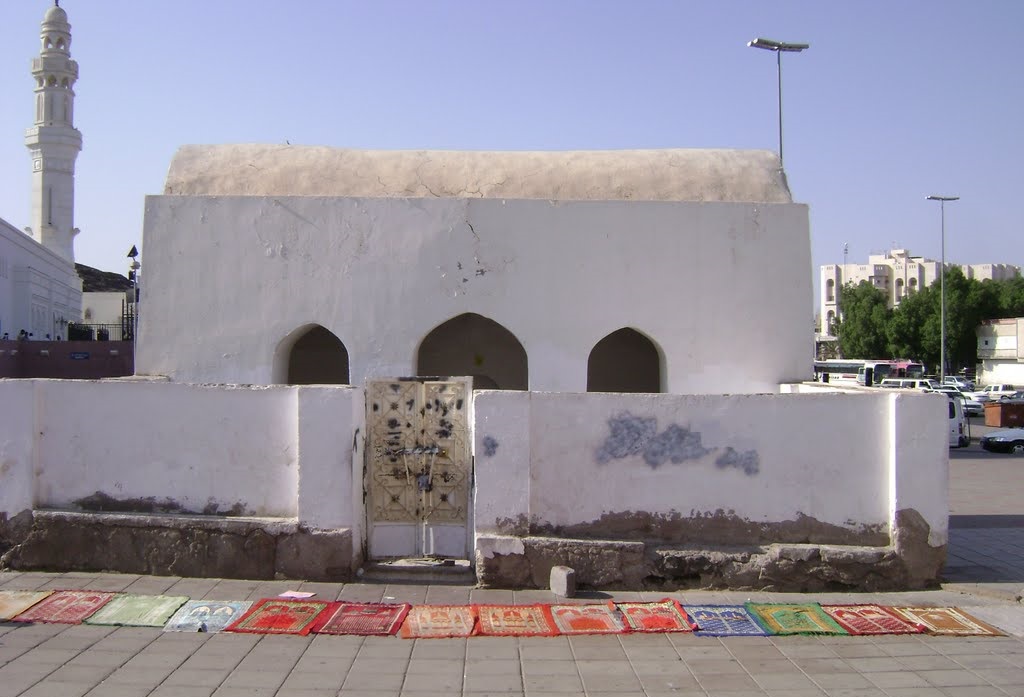
Salman al-Farisi
d. 33/35 H. in Madina Munawwara
radiya Allah anhu
.
Hadith from Shamail
t.b.d.
English
2. From naqshbandi.org
View on sunnah.org
This is a story of a seeker of Truth, the story of Salman the Persian, gleaned, to begin with, from his own words:
I grew up in the town of Isfahan in Persia in the village of Jayyan. My father was the Dihqan or chief of the village. He was the richest person there and had the biggest house.
Since I was a child my father loved me, more than he loved any other. As time went by his love for me became so strong and overpowering that he feared to lose me or have anything happen to me. So he kept me at home, a veritable prisoner, in the same way that young girls were kept.
I became devoted to the Magian religion so much so that I attained the position of custodian of the fire which we worshipped. My duty was to see that the flames of the fire remained burning and that it did not go out for a single hour, day or night.
My father had a vast estate which yielded an abundant supply of crops. He himself looked after the estate and the harvest. One day he was very busy with his duties as dihqan in the village and he said to me:
“My son, as you see, I am too busy to go out to the estate now. Go and look after matters there for me today.”
On my way to the estate, I passed a Christian church and the voices at prayer attracted my attention. I did not know anything about Christianity or about the followers of any other religion throughout the time my father kept me in the house away from people. When I heard the voices of the Christians I entered the church to see what they were doing.
I was impressed by their manner of praying and felt drawn to their religion. “By God,” I said, “this is better than ours. I shall not leave them until the sun sets.”
I asked and was told that the Christian religion originated in AshSham (Greater Syria). I did not go to my father’s estate that day and at night, I returned home. My father met me and asked what I had done. I told him about my meeting with the Christians and how I was impressed by their religion. He was dismayed and said:
“My son, there is nothing good in that religion. Your religion and the religion of your forefathers is better.”
“No, their religion is better than ours,” I insisted.
My father became upset and afraid that I would leave our religion. So he kept me locked up in the house and put a chain on my feet. I managed however to send a message to the Christians asking them to inform me of any caravan going to Syria. Before long they got in touch with me and told me that a caravan was headed for Syria. I managed to unfetter myself and in disguise accompanied the caravan to Syria. There, I asked who was the leading person in the Christian religion and was directed to the bishop of the church. I went up to him and said:
“I want to become a Christian and would like to attach myself to your service, learn from you and pray with you.”
The bishop agreed and I entered the church in his service. I soon found out, however, that the man was corrupt. He would order his followers to give money in chanty while holding out the promise of blessings to them. When they gave anything to spend in the way oRGod however, he would hoard it for himself and not give anything to the poor or needy. In this way he amassed a vast quantity of gold. When the bishop died and the Christians gathered to bury him, I told them of his corrupt practices and, at their request, showed them where he kept their donations. When they saw the large jars filled with gold and silver they said.
“By God, we shall not bury him.” They nailed him on a cross and threw stones at him.
I continued in the service of the person who replaced him. The new bishop was an ascetic who longed for the Hereafter and engaged in worship day and night. I was greatly devoted to him and spent a long time in his company.
(After his death, Salman attached himself to various Christian religious figures, in Mosul, Nisibis and elsewhere. The last one had told him about the appearance of a Prophet in the land of the Arabs who would have a reputation for strict honesty, one who would accept a gift but would never consume charity (sadaqah) for himself. Salman continues his story.)
A group of Arab leaders from the Kalb tribe passed through Ammuriyah and I asked them to take me with them to the land of the Arabs in return for whatever money I had. They agreed and I paid them. When we reached Wadi al-Qura (a place between Madinah and Syria), they broke their agreement and sold me to a Jew. I worked as a servant for him but eventually he sold me to a nephew of his belonging to the tribe of Banu Qurayzah. This nephew took me with him to Yathrib, the city of palm groves, which is how th e Christian at Ammuriyah had described it.
At that time the Prophet was inviting his people in Makkah to Islam but I did not hear anything about him then because of the harsh duties which slavery imposed upon me.
When the Prophet reached Yathrib after his hijrah from Makkah, I was in fact at the top of a palm tree belonging to my master doing some work. My master was sitting under the tree. A nephew of his came up and said:
“May God declare war on the Aws and the Khazraj (the two main Arab tribes of Yathrib). By God, they are now gathering at Quba to meet a man who has today come from Makkah and who claims he is a Prophet.” I felt hot flushes as soon as I heard these words and I began to shiver so violently that I was afraid that I might fall on my master. I quickly got down from the tree and spoke to my master’s nephew. “What did you say? Repeat the news for me.”
My mastcr was very angry and gave me a terrible blow. “What does this matter to you? Go back to what you were doing,” he shouted.
That evening, I took some dates that I had gathered and went to the place where the Prophet had alighted. I went up to him and said:
“I have heard that you are a righteous man and that you have companions with you who are strangers and are in need. Here is something from me as sadaqah. I see that you are more deserving of it than others.”
The Prophet ordered his companions to eat but he himself did not eat of it.
I gathered some more dates and when the Prophet left Quba for Madinah I went to him and said: “I noticed that you did not eat of the sadaqah I gave. This however is a gift for you.” Of this gift of dates, both he and his companions ate.
The strict honesty of the Prophet was one of the characteristics that led Salman to believe in him and accept Islam.
Salman was released from slavery by the Prophet who paid his Jewish slave-owner a stipulated price and who himself planted an agreed number of date palms to secure his manumission. After accepting Islam, Salman would say when asked whose son he was:
“I am Salman, the son of Islam from the children of Adam.”
Salman was to play an important role in the struggles of the growing Muslim state. At the battle of Khandaq, he proved to be an innovator in military strategy. He suggested digging a ditch or khandaq around Madinah to keep the Quraysh army at bay. When Abu Sufyan, the leader of the Makkans, saw the ditch, he said, “This strategem has not been employed by the Arabs before.”
Salman became known as “Salman the Good”. He was a scholar who lived a rough and ascetic life. He had one cloak which he wore and on which he slept. He would not seek the shelter of a roof but stayed under a tree or against a wall. A man once said to him: “Shall I not build you a house in which to live?” “I have no need of a house,” he replied.
The man persisted and said, “I know the type of house that would suit you.” “Describe it to me,” said Salman.
“I shall build you a house which if you stand up in it, its roof will hurt your head and if you stretch your legs the wall will hurt them.”
Later, as a govenor of al-Mada’in (Ctesiphon) near Baghdad, Salman received a stipend of five thousand dirhams. This he would distribute as sadaqah. He lived from the work of his own hands. When some people came to Mada’in and saw him working in the palm groves, they said, “You are the amir here and your sustenance is guaranteed and you do this work!”
“I like to eat from the work of my own hands,” he replied. Salman however was not extreme in his asceticism. It is related that he once visited Abu ad-Dardaa with whom the Prophet had joined him in brotherhood. He found Abu adDardaa’s wife in a miserable state and he asked, “What is the matter with you.”
“Your brother has no need of anything in this world*” she replied.
When Abu ad-Dardaa came, he welcomed Salman and gave him food. Salman told him to eat but Abu adDardaa said, “I am fasting.”
“I swear to you that I shall not eat until you eat also.”
Salman spent the night there as well. During the night, Abu ad-Dardaa got up but Salman got hold of him and said:
“O Abu ad-Dardaa, your Lord has a right over you. Your family have a right over you and your body has a right over you. Give to each its due.”
In the morning, they prayed together and then went out to meet the Prophet, peace be upon him. The Prophet supported Salman in what he had said.
As a scholar, Salman was noted for his vast knowledge and wisdom. Ali said of him that he was like Luqman the Wise. And Ka’b al-Ahbar said: “Salman is stuffed with knowledge and wisdomÑan ocean that does not dry up.” Salman had a knowledge of both the Christian scriptures and the Qur’an in addition to his earlier knowledge of the Zoroastrian religion. Salman in fact translated parts of the Qur’an into Persian during the life-time of the Prophet. He was thus the first person to translate the Qur’an into a foreign language.
Salman, because of the influential household in which he grew up, might easily have been a major figure in the sprawling Persian Empire of his time. His search for truth however led him, even before the Prophet had appeared, to renounce a comfortable and affluent life and even to suffer the indignities of slavery. According to the most reliable account, he died in the year thirty five after the hijrah, during the caliphate of Uthman, at Ctesiphon. ↑
Burial Place & Location
Location:
Masjid Salman al-Farisi (Arabic: مسجد سلمان الفارسي) is part of a group of mosques known as al-Masajid al-Sab’a (Arabic: المساجد السبعة) or The Seven Mosques, located north-west of the Haram.
Map –  Show on overview map
Show on overview map
Bio: Sh Muhammad al-Hashimi

Shaykh Muhammad al-Hashimi al Hasani al-Shadhili
b. 1298 – d. 1381 H. (1880–1961 CE) in Damascus (CE)
Bio: Sh. ‘Umar ibn al-Farid | سيدي عمر بن الفارض
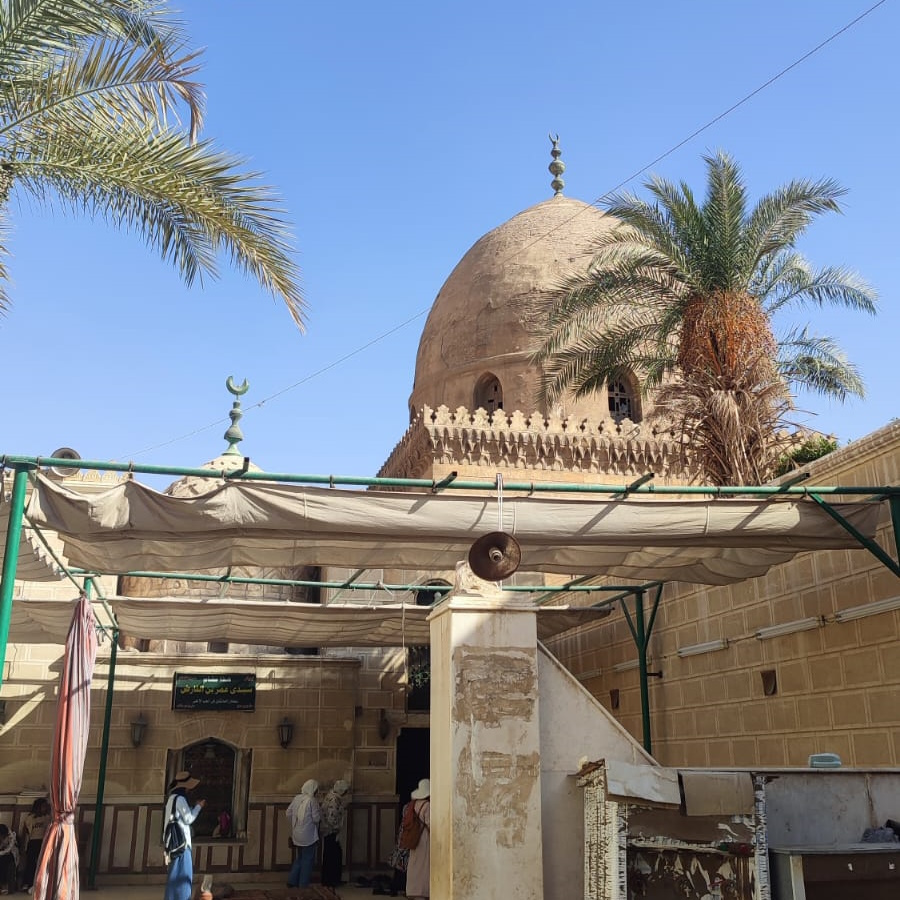
Sayyidi Sh. 'Umar ibn al-Farid
سيدي الشيخ عمر بن الفارضb 576 - d. 632 H. in Cairo
may Allah be pleased with him
Bio: Sh. Abd al-‘Aziz al-Dabbagh

Sayyidi Shaykh Abd al-‘Aziz al-Dabbagh al-Hasani
الشيخ مولانا عبد العزيز الدباغ
b 1095 – d. 1131 H. (1718 CE) in Fas
Bio: Sh. Abul Mawahib al-Shadhili | الشيخ أبو المواهب الشاذلي

Sh. Abul Mawahib al-Shadhili
الشيخ أبو عبد الله محمد أبو المواهب التونسي الشاذلي الوفائيd. 881 H. (? after 850) in Cairo
Bio: Sh. Abul-Najib al-Suhrawardi

Abul-Najib Diya’ul-Din al-Suhrawardi
Shaykh Abul-Najib ´Abd al-Qahir (or ´Abd al-Qadir) Diya’ul-Din (and Najib al-Din) al-Suhrawardi
الشيخ أبو النجيب عبد القادر السهروردي الملقب بضياء الدين، وبنجيب الدين
b. 490 in Suhraward – d. 563 H. in Baghdad (1097 – 1168 CE)
qaddasa Allah sirrahu
﷽
He is the uncle of Shaykh Shihab al-Din ´Umar al-Suhrawardi (author of ´Awarif al-Ma´arif).
ولد بسهرورد ، وسكن بغداد وبها وفاته. من آثاره «آداب المريدين» و«شرح الأسماء الحسنى» و«غريب المصابيح».
English
He took the Sufi Path from his uncle Wajih al-Din Abu Hafs Umar al-Qadi (b. 455 – d. 532 H. in Baghdad), who was the muqaddam of a Zawiya known as Sa´adat al-Khadim (“The bliss of the servant”) in Baghdad. His silsila goes back to Imam Al-Junayd, and so does the chain of Imam Ahmad al-Ghazali.
Many Sufi turuq branched off from him. The greatest Shaykhs kept his company, most famous amongst them: his nefew Shihab al-Din ´Umar al-Suhrawardi (author of ´Awarif al-Ma´arif).
Amongst his writings is the book Adab al-Muridin, to which Mulla ´Ali al-Qari later wrote a commentary.
عربي
(( ءاداب المريدين )) ـ شرحه الشيخ علي القارئ شرحاً جيداً بعد أن تصوف في ءاخر عمره ـ .
ويتفرع منه كثير من طرق الصوفية ، مثل الكبروية والمولية والخلوتية والجلوتية والسهروردية وغيرها كما يظهر من (( تبيان وسائل الحقائق في بيان سلاسل الطرائق )) للشيخ كمال الدين الحريري المتوفى سنة 1299 هـ ـ وهو مخطوط في ثلاث مجلدات ـ .
أخذ أبو النجيب التصوف عن عمه وجيه الدين أبي حفص عمر القاضي ، وعن الشيخ أحمد الغزالي .
أما عمه فكان مقدمَ الصوفية في الرباط المعروف بسعادة الخادم ببغداد ، ولد سنة 455 هـ ، وتوفي في ربيع الأول سنة 532 هـ ، ودفن عند قبر رُوَيم بالشونيزية رحمهما الله تعالى .
وهو أخذ عن والده نجيب الدين محمد ولعله توفي في حدود سنة 475 هـ .
وهو أخذ عن أبيه عبد الله عموية بن سعد البكري ، وتكون وفاته سنة 425 هـ تقريباً .
وهو أخذ عن أحمد الأسود الدينوري الذي ذكره القشيري في الرسالة بعد تراجم قدماء الصوفية ، في طبقة من أدركهم وعاصرهم من أمثال أبي عبد الرحمن السلمي المتوفى سنة 412 هـ ، وكان ميلاد القشيري سنة 376 هـ فيكون أحمد الأسود معمَّراً عاش إلى حدود سنة 380 هـ ، لأن شيخه ممشاد عَلُو الدينوري توفي سنة 299 هـ بعد وفاة سيد الطائفة الجنيد رضي الله عنهم أجمعين .
وأما أحمد الغزالي فقد أخذ عن أبي بكر النساج عن أبي القاسم علي الكركاني عن أبي عثمان المغربي عن أبي علي الكاتب عن أبي علي الروذباري عن سيد الطائفة عن خاله سري السقطي عن معروف الكرخي عن داود الطائي عن حبيب العجمي عن الحسن البصري عن علي كرم الله وجهه عن النبي صلى الله عليه وسلم .
وتراجمهم معروفة أمدنا الله تعالى بمددهم أجمعين .
ومشاهير أصحاب أبي النجيب هم ابن أخيه صاحب العوارف شهاب الدين عمر السهروردي ، وعمار بن ياسر البتليسي ، وقطب الدين محمد بن محمد الأبهري
وأما ( الطريقة ) الكبروية المنسوبة إلى أبي الجناب نجم الدين أحمد بن عمر الطامة الكبرى الخيوقي الخوارزمي ، فإنه أخذ عن عمار بن ياسر البتليسي عن أبي النجيب .
وأما ( الطريقة ) المولوية المنسوبة إلى مولانا جلال الدين البكري الرومي فإنه أخذ عن برهان الدين المحقق الترمذي عن سلطان العلماء محمد بهاء الدين بن الحسين البكري البلخي ـ والد الجلال الرومي ـ عن نجم الدين الكبرى عن عمار بن ياسر عن أبي النجيب .
وأما ( الطريقة ) الخلوتية المنسوبة إلى الشيخ محمد بن نور الخلوتي الخوارزمي فإنه أخذ عن الشيخ إبراهيم الزاهد الكيلاني عن جمال الدين التبريزي عن ركن الدين أبي الغنائم محمد بن الفضل السنجاني عن قطب الدين الأبهري عن أبي النجيب السهروردي .
وأما ( الطريقة ) الجلوتية المنسوبة إلى الحاج بيرام الجلوتي الأنقروي : فإنه أخذ عن حامد الأقسرائي عن إبراهيم الأردبيلي عن صفي الدين أبي إسحق الأردبيلي عن إبراهيم الزاهد الكيلاني بسنده السابق .
وصاحب ” روح البيان ” أخذ الطريقة الجلوتية عن السيد عثمان الفضلي وهو عن عبد الله الواعظ ذاكر زادة عن أحمد الخطيب دزدار زادة عن الشيخ محمود الهدائي الجلوتي عن محمد محي الدين أفتادة عن الشيخ خضر درة المقعد عن الشيخ نعمان الأنقروي المعروف بالحاج بيرام الولي بسنده السابق .
و ( الطريقة ) السُهْرَوَردية تنسب إلى الشهاب صاحب العوارف ، ومنها تتفرع طرق كثيرة أسانيدها في ” السمط المجيد ” و ” تبيان وسائل الحقائق ” و ” حديقة الأولياء ” و ” السلسبيل المعين ” وغيرها من كتب القوم .
وترجمة أبي النجيب في غاية من الشهرة في كتب الطبقات والتراجم قدس الله سره
From Sha'rani's Tabaqat
ومنهم الشيخ أبو النجيب عبد القادر السهروردي
رضي الله تعالى عنه ويلقب بضياء الدين، وبنجيب الدين، ونسبه ينتهي إلى أبي بكر الصديق رضي الله عنه، وكان رضي الله عنه يتطيلس، ويلبس لباس العلماء، ويركب البغلة، وترفع الغاشية بين يديه، انعقد عليه إجماع المشايخ، والعلماء بالاحترام وأوقع الله عز وجل له القبول التام في الصدور، والمهابة الوافرة في القلوب، وتخرج بصحبته جماعة من الأكابر مثل الشيخ شهاب الدين السهروردي والشيخ عبد الله بن مسعود الرومي وغيرهما، واشتهر ذكره في الآفاق، وقصد من كل قطر.
ومن كلامه رضي الله عنه: الأحوال معاملات القلوب، وهي ما يحل بها من صفاء الأكدار، وفوائد الحضور، ومعاني المشاهدة، وكان رضي الله عنه يقول: أول التصوف علم وأوسطه عمل، وآخره موهبة فالعلم يكشف عن المراد، والعمل يعين على الطلب، والموهبة تبلغ غاية الأمل، وأهل التصوف على ثلاث طبقات مريد طالب، ومتوسط طائر، ومنته واصل فالمريد صاحب وقت، والمتوسط صاحب حال والمنتهي صاحب يقين، وكان رضي الله عنه يقول: أفضل الأشياء عندهم عد الأنفاس. فمقام المريد المجاهدات، والمكابدات وتجرع المرارات ومجانية الحظوظ، وكل ما للنفس فيه منفعة. ومقام المتوسط ركوب الأهوال في طلب المراد، ومراعاة الصدق في الأحوال، واستعمال الأدب في المقامات، وهو مطالب بآداب المنازل، وهو صاحب تلوين لأنه يرتقي من حال إلى حال، وهو في الزيادة. ومقام المنتهي الصحو، والثبات، وإجابة الحق من حيث دعاه قد جاوز المقامات، وهو في محل التمكين لا تغيره الأحوال، ولا تؤثر فيه الأهوال قد استوى في حالة الشدة، والرخاء، والمنع، والعطاء، والجفاء، والوفاء أكله كجوعه، ونومه كسهره، وقد فنيت حظوظه، وبقيت حقوقه ظاهرة مع الخلق وباطنه مع الحق، وكل ذلك منقول من أحوال النبي صلى الله عليه وسلم.
وكان إذا جلس فقير في خلوة يدخل عليه في كل يوم يتفقد أحواله، ويقول له يرد عليه الليلة كذا، ويكشف لك عن كذا، وتنال حال كذا وسيأتيك شخص في صورة كذا، ويقول لك كذا فاحذره فإنه شيطان فيقع للفقير جميع ما أخبره به الشيخ. سكن بغداد إلى أن مات بها سنة ثلاث، وستين وخمسمائة ودفن بمدرسته على شاطئ دجلة، وقبره بها ظاهر يزار رضي الله عنه.
Burial Place
More
Bio: Sh. Ahmad al-Badawi

Sh. Ahmad al-Badawi
سيدي الشيخ أحمد ابدوي
d. 675 H. in Tanta, Egypt
radiya Allah anhu
Bio: Sh. Ahmad al-Rifa´i

Sayyidi Shaykh Ahmad al-Rifa´i
b. 512 – d. 578 H. in Umm ´Abida (a village in Bata’ih)
qaddasa Allah sirrahu
.
One of the greatest Sufi Masters – may Allah be pleased with him.
English
عربي
أحمد بن أبي الحسين الرفاعي
Burial Place
More
Bio: Sh. Ahmad Habbal
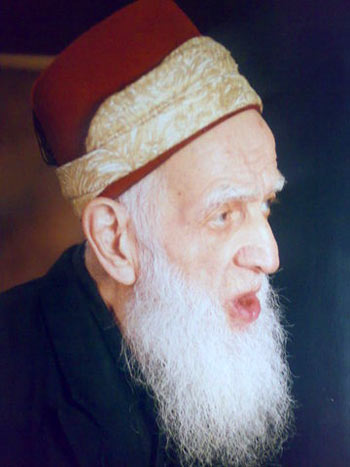
Shaykh Ahmad al-Rifa´i al-Habbal al-Dimashqi
الشيخ أحمد الرفاعي الحبال
d. 1430 H. (2009 CE) in Damascus
Bio: Sh. Ahmad ibn Ajiba
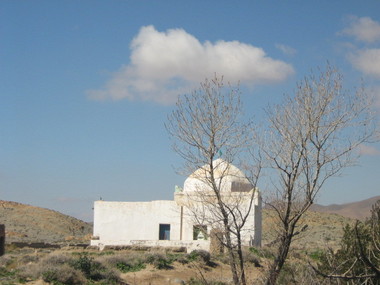
Sayyidi Shaykh Ahmad ibn Ajiba al-Hasani
سيدي الشيخ أحمد ابن عجيبة الحسني
d. 1224 H. (1809 CE) East of Tetuan
Bio: Sh. Ahmad ibn ‘Uqbah al-Hadrami | الشيخ أبو العباس الحضرم

Sh. Abul-´Abbas Ahmad b. ´Uqba al-Hadrami
الشيخ أبو العباس الحضرم أحمد بن عقبة الحضرميb. 857 H. in Hadramawt – d.895 H. (1489 CE) in Cairo
Bio: Sh. Ali al-Khawwas | الشيخ علي الخوّاص
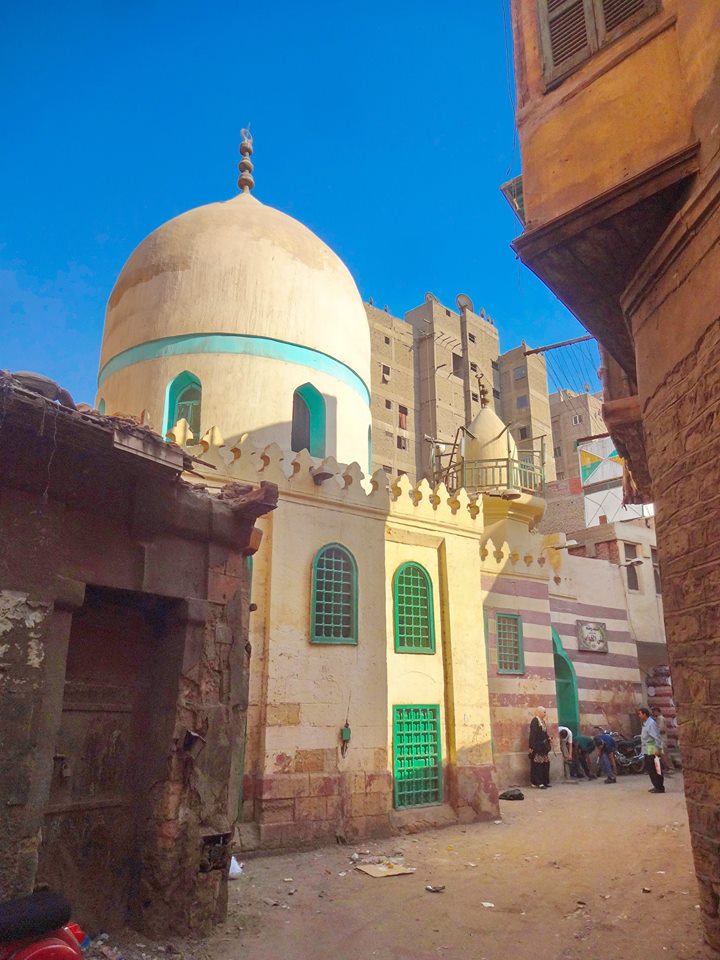
Sh. ´Ali al-Khawas al-Burullusi al-Shadhili
الشيخ علي الخوّاص البرلسيd.949 H. (1542 CE) in Cairo
The Shaykh of Imam al-Sha´rani - may Allah be pleased with them
Bio: Sh. Dawud ibn Makhila (al-Bakhili)
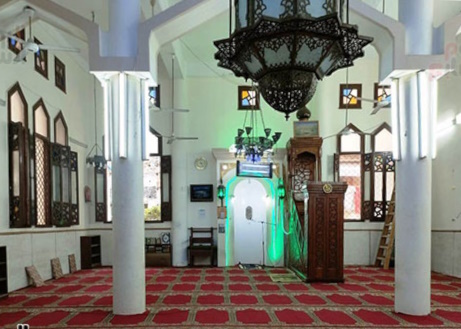
Sayyidi Shaykh Dawud b. Makhila (al-Bakhili) al-Shadhili
(الباخلي) الشيخ داود بن ماخلا
d. 732/735 H. (1331 CE) in Alexandria
.
He is Sidi Sharaf al-Din Abu Sulayman Dawud b. Makhila al-Iskandari al-Shadhili, also known as al-Bakhili. He took the Shadhili silsila from Sayyidi Shaykh IbnʿAṭā’ Allāh As-Sakandarī, and passed it on to Sayyidi Shaykh Muhammad Wafa.
English
He is the succour of the elect, the qutb of saints, the great imam, and the illustrious scholar. He is the spiritual guide who trained novices and guided wayfarers to the Presence of the Divine. He is Sidi Sharaf al-Din Abu Sulayman Dawud b. Makhila al-Iskandari al-Shadhili, also known as al-Bakhili. [1]
He was a scholar steeped in knowledge and was among those with far-reaching impact on matters. He had the upper hand when it came to disposal of affairs in creation.
Despite being unlettered, he possessed mastery in both the outward and inward sciences. He authored extraordinary books, elucidating Sufi states, secrets, sciences and stations. They include ‘Uyun al-Haqa’iq and al-Latifat al-Mardiyya fi Sharh al-Du’a’ al-Shadhiliyya. He also wrote a commentary on Imam al-Shadhili’s Hizb al-Barr (also known as Al-Hizb al-Kabir – The Grand Invocation), and Hizb al-Bahr.
At the beginning of his affair, he was a police officer who served at the governor’s residence in Alexandria. Sitting opposite the governor, the shaykh would share a gesture with him so he may infer the accused’s guilt or innocence. If he hinted that the accused was innocent, the governor would acquit him and pardon him, but if he hinted the opposite, the governor would exact retaliation against the accused and treat him accordingly.
He was an ascetic who applied scrupulousness in matters of the din. Saints blossomed in his courtyard the way crops sprout forth from the earth. It should suffice us as an indicator to his virtues that his student was Sidi Muhammad Wafa al-Shadhili. Had nothing else been recorded in his favour, this would have been enough.
He died in Alexandria in about AH 730 [2] His mausoleum attracts visitors. The daily prayers take place in his mosque.
0 Allah, benefit us by love for him, and make us tread his spiritual path, amin.
Footnotes:
[1] See his biography in al-A’lam (2/333) and in Tabaqat al-Shadhiliyyat al-Kubra by Muhyi al-Din (p. 146).
[2] In al-A’am (2/333) and Kashf (p. 661), the year of his death is given as AH 732.
عربي
2. From Kuhin: Tabaqat al-Shadhiliyya: View book | Download | Chapter [28] (see below)
3. From youm7.com
(…- حوالي 735)
غوثُ الأصفياء، وقطبُ الأولياء، الإمام الكبير، والعالم الشهير المُسلِّكُ مُرّبي المريدين، وموصلُ السالكين سيدي شرف الدين أبو سليمان داود بن ماخلا الإسكندري الشاذلي رضى الله عنه.
كان من العلماء الراسخين المتمكنين، ومن أصحاب الدوائر الكُبرى، له اليد العليا في التصريف.
وكان جامعًا بين علمي الظاهر والباطن، مع أنه كان أُمِّيًّا، وله مؤلفات عجيبة شرحَ فيها أحوالَ القوم، وتكلَّمَ على أسرارهم وعلومهم ومنازلاتهم منها كتاب «عيون الحقائق» ومنها كتاب «اللطيفة المرضية في شرح دعاء الشاذلية»، وله شرح على «حزب البر» وآخر على «حزب البحر».
وكان رضى الله عنه في بدايته شرطيًّا ببيت الوالي بالإسكندرية، وكان يجلسُ تجاه الوالي، وبينهما إشارةٌ يفهمُ منها وقوع المُتَّهم أو براءته، فإن أشارَ إليه أن المُتَّهمَ برئٌ برَّأَهُ، وعفا عنه، وإن أشار له غير ذلك اقتصَّ منه، وعامله بما يستحقُّه.
وكان رضى الله عنه زاهدًا ورعًا، وكانت الأولياء تنبتُ بساحته كما تُنبتُ الأرض الزَّرعَ، ويكفينا في مناقبه أنَّ تلميذه سيدي محمد وفا الشاذلي، ولو لم يكن له غيرُ ذلك لكفى.
توفي رضى الله عنه بالإسكندرية عام نيِّفٍ وثلاثين وسبع مئة، وله مقامٌ يُزار، ومسجدٌ كبيرٌ تُقام فيه الشعائر. اللهم انفعنا بمحبته، واسلك بنا على طريقه. آمين.
([1]) داود بن عمر بن إبراهيم الشاذلي المالكي، أبو سليمان الإسكندري: من فقهاء المالكية، متصوف وفاته بالإسكندرية سنة 732هـ من كتبه «كشف البلاغة» و «شرح الجمل» للزجاجي، و «مختصر التلقين» [«الأعلام» (2/333)].
From youm7.com
الشيخ داود ماخلا … تزوج ابنة سيدى ياقوت العرش حفيدة سيدى المرسى أبو العباس، وعاش فى الإسكندرية حتى توفى سنة 733ه، ودفن فى هذا المكان الموجود به مسجده وتحتفل الطرق الصوفية فى 21 رمضان بمناسبة افتتاح مسجده الذى أعيد بناؤه سنة 1978 .
Photos
Ref: youm7.com
Video
Books
اللطيفة المرضية بشرح دعاء الشاذلية
وهذا الشرح اعتد به الإمام السيوطي ونقله عنه وأثنى عليه وعلى مؤلفه في رسالته في الاقتباس المثبتة بمجموع فتاواه المسمى الحاوي في الفتاوي.
For sale at abjjad.com
لعل هذا الكتاب هو أول الشروح المؤلفة على حزب البحر للإمام أبى الحسن الشاذلى فلا يعلم شرح سابق عليه . وهو أوسع هذه الشروح وأطولها من حيث النفس العلمى . ومؤلفه هو رابع خلفاء سيدى أبى الحسن الشاذلى إذ تلقى الطريق عن الإمام العارف ابن عطاء الله السكندرى كما أنه شيخ العارف الكبير السيد محمد وفا شيخ البيت الوفائى الشهير .
وقد وصفه الإمام الشعرانى فى ترجمته بالعارف الكبير وهو جدير بهذا الوصف , كما يعلم من كتابه الفريد عيون الحقائق الذى سبق لنا نشره محققا لأول مرة . وقد احتوى هذا الشرح الجامع على تحقيقات علمية نادرة تشهد لمؤلفه برسوخ القدم فى العلم والمعرفة الصوفية.
نشر سنة 2015
Alternative edition: abjjad.com
ومن بواكير هذه الشروح هذا الشرح المنير لحزب البحر الشهير، بل لعله أبكرها علي الإطلاق، هذا الشرح المنيف علي حزب سيدي أبي الحسن الشاذلي المعروف بحزب البحر، فلا يحضرني في هذا المقام أي شرح لورد من الأوراد الصوفية سابق علي هذا الشرح.
وريادة هذا الشرح المبارك لا تقتصر علي سبقه الزماني، بل تمتد إلي سماته كتأليف من حيث عمق المعالجة للقضايا التي يطرحها نسق الحزب أو يوردها عليه المعترضون. وقد أبان فيه العلامة اللغوي النحوي الفقيه المالكي الصوفي الشاذلي الأستاذ الكبير سيدي داود بن باخلا عن نفس طويل ونظر عميق في تناول قضيتين مهمتين في الحزب مما قد يعترض به علي الحزب وقائله، وهما: قضية الاقتباس في القرآن، وقضية سؤال العصمة.
وقد جاءت معالجة سيدي داود قدس الله سره للقضيتين من الدقة العلمية والتوسع في التحري وتلمس الأدلة بحيث إن إماماً جامعاً مثل الإمام جلال الدين السيوطي يعتمد علي كلام الإمام في فتواه في المسألة في كتابه المعروف “الحاوي للفتاوي”
عيون الحقائق
For sale at : abjjad.com
تأليف داود بن عمر بن إبراهيم الباخلي الشاذلي/داود بن ماخلا (تأليف) عاصم إبراهيم الكيالي (تحقيق)
Map
Bio: Sh. Ibrahim al-Desuqi al-Husayni

Shaykh Ibrahim al-Desuqi al-Husayni
الشيخ سيدي إبراهيم الدسوقي
b – d. 675 H. (… CE) in Tanta
From the companions of Imam Abul Hasan al-Shadhili
may Allah be pleased with them
Bio: Sh. Makin al-Din al-Asmar | سيدي مكين الردين الأسمر
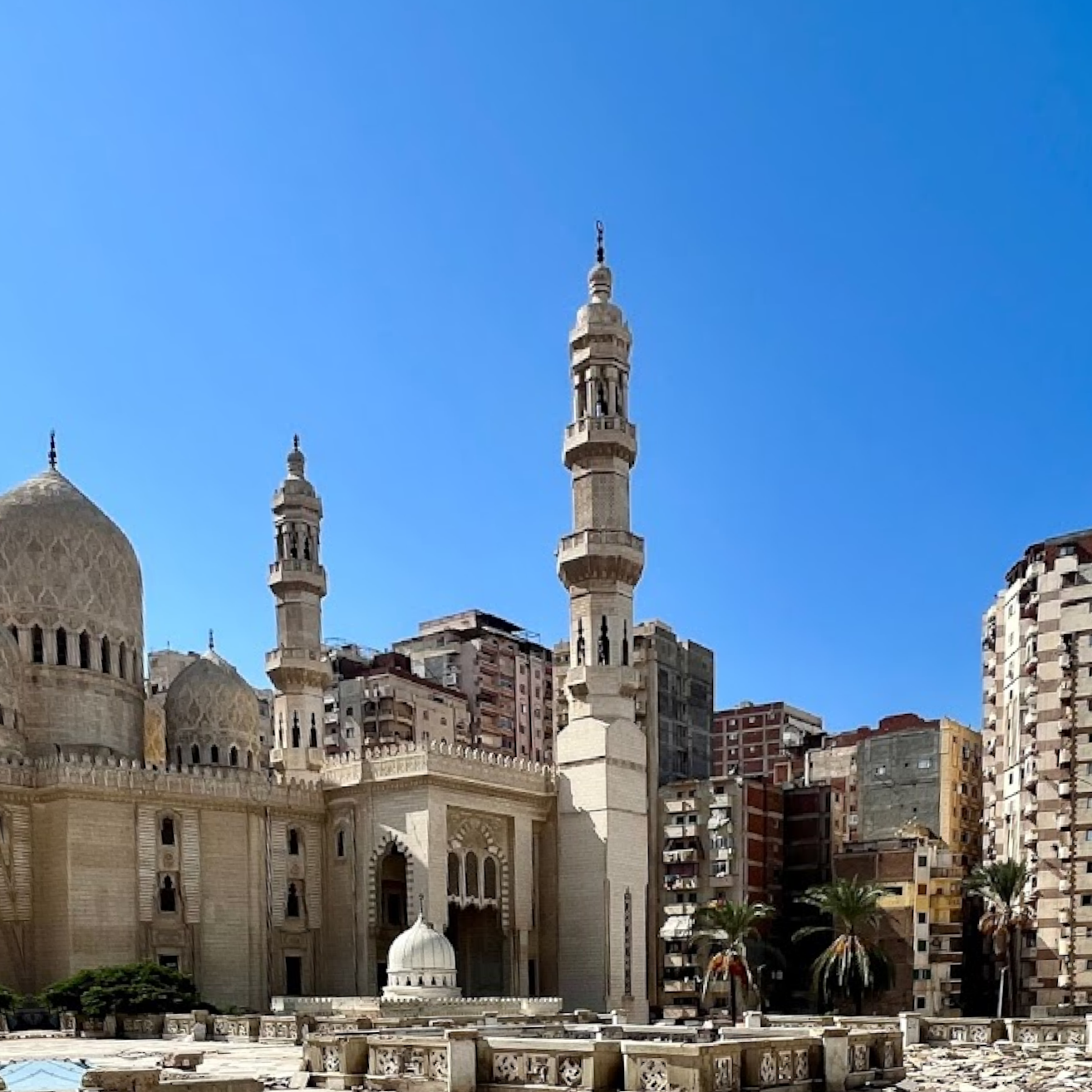
Sayyidi Sh. Makin al-Din al-Asmar
سيدي مكين الردين الأسمر
b 610 – d. 692 H. in Alexandria (near Sayyidi Sh. Abul ‘Abbas al-Mursi)
From the companions of Sayyidi Imam Abul Hasan al-Shadhili
qaddasa Allah Sirrahu
Bio: Sh. Muhammad ibn Habib al-Buzidi

Sayyidi Shaykh Muhammad Ibn al-Habib Al-Buzidi
الشيخ محمد بن حبيب البوزيدي, سيدي محمد بن الحبيب بن عبد الله بن أحمد
b. 1239 – d. 1327 H. in Mustaghanim, Algeria (1824-1909 CE)
.
English
t.b.d.
عربي
محمد بن حبيب البوزيديهو سيدي محمد بن الحبيب بن عبد الله بن أحمد بن زيدان بن الصغير بن الجيلالي بن عبّو بن عبد الله بن أحمد بن أمحمد بن عبد الرحمن بن علي بن عبد المالك بن إبراهيم بن عامر بن عثمان بن إسحاق بن علي بن سيدي بوزيد الغوث (دفين آفلو وإليه ينسب لقب العائلة البوزيدية) بن علي بن المهدي بن سفيان بن يسّار بن موسى بن عيسى بن محمد بن موسى بن سليمان بن موسى بن محمد بن عيسى بن إدريس الأصغر بن إدريس الأكبر بن عبد الله الكامل بن الحسن المثنى بن سيدنا الحسن السبط بن سيدنا علي بن أبي طالب وسيدتنا فاطمة الزهراء بنت سيدنا النبي محمد رسول الله صلى الله عليه وسلم.
Photos
Bio: Sh. Muhammad ibn Yallis

Shaykh Muhammad ibn Yallis al-Tlimsani al-Shadhili
b. 1264 – d. 1346/7 H. in Damascus (1847–1927)
Bio: Sh. Muhammad Zhafir (the son)

Shaykh Muhammad Zhafir (the son)
الشيخ محمد بن حمزة ظافر المدني
b. 1244 in Tarablus, Misrata (Libya) – d. 1321 H. in Istanbul (1829 – 1903 CE)
qaddasa Allah sirrahu
Bio: Sh. Rislan al-Dimashqi

Sayyidi Sheikh Rislan al-Dimashqi
d. ~540 H. in Damascus
radiya Allah anhu
.
One ohe greatest walis of Damascus. His chain goes back to al-Sari al-Saqati.
English
Excerpt from Risalat f’it Tawhid
Concerning the Affirmation of Divine Oneness
by Shaykh Wali Raslan ad-Dimashqi
translation by Muhtar Holland © Baz Publications
View | Download
Español
عربي
رسلان الدمشقي
Burial Place
Reference: Ziarat al-Sham
More
Bio: Sh. Shams al-Din al-Hanafi | الشيخ سيدي شمس الدين الحنفي
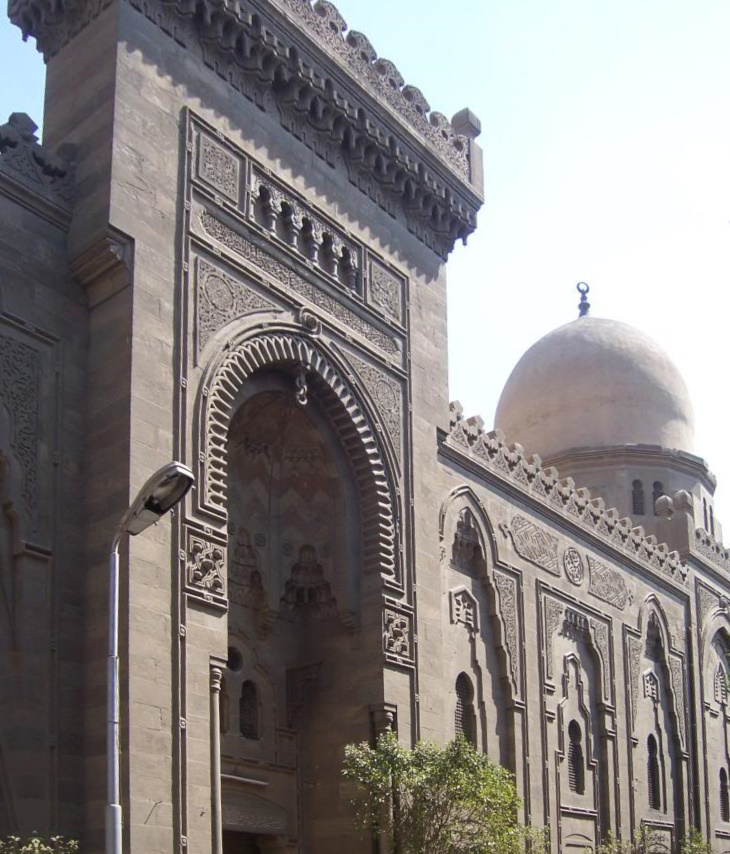
Sh. Shams al-Din al-Hanafi al-Shadhili
الشيخ سيدي شمس الدين الحنفيb. 775 – d.847 H. (1443 CE) in Cairo
Bio: Sh. Sharif al-Yaqoubi
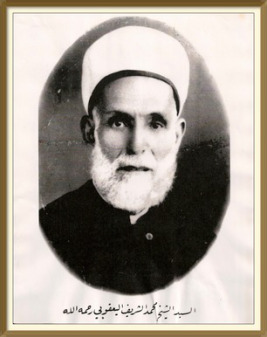
Sayyid Shaykh Sharif al-Yaqoubi al-Hasani al-Idrisi
الشيخ السيد شريف اليعقوبي الحسني
b. 1282 – d. 1362 H. (1865–1943 CE) in Damascus
qaddasa Allah sirrahu
Bio: Sh. Shihab al-Din ´Umar al-Suhrawardi
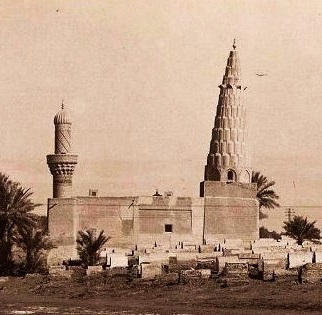
Shaykh Shihab al-Din ´Umar Abu Hafs al-Suhrawardi
الشيخ شهاب الدين أبو حفص عمر السهروردي البغدادي
b. 539 in Suhraward – d. 632 H. in Baghdad (1234 CE)
qaddasa Allah sirrahu
﷽
Author of ´Awarif al-Ma´arif
Nephew and student of Shaykh Najib al-Din al-Suhrawardi.
English
عربي
هو شهاب الدين أبو حفص وأبو عبد الله عمر بن محمد بن عبد الله بن محمد بن عبد الله – وهو عمويه – بن سعد بن حسين بن القاسم بن النضر بن القاسم بن محمد بن عبد الله ابن فقيه المدينة وابن فقيهها عبد الرحمن بن القاسم بن محمد بن أبي بكر الصديق القرشي التيمي البكري السهروردي الصوفي ثم البغدادي.
ولد في رجب سنة 539 هـ وقدم من سهرورد، فصحب عمه أبا النجيب ولازمه وأخذ عنه الفقه والوعظ والتصوف، وصحب قليلاً عبد القادر الجيلاني، وفي البصرة صاحب أبا محمد بن عبد. وسمع من هبة الله بن أحمد الشبلي، وأبي الفتح ابن البطي، وخزيفة بن الهاطرا، وأبي الفتوح الطائي، وأبي زرعة المقدسي، ومعمر بن الفاخر، وأحمد بن المقرب، ويحيى بن ثابت.
وفاته
توفي شهاب الدين في بغداد في أول ليلة من سنة 632 هـ/1234م، ودفن في المقبرة الوردية، وبني على قبرهِ قبة على شكل منارة مخروطية الشكل على طراز القبب السلجوقية، وقيل ان بجانب قبرهِ ضريح الخليفة العباسي المستعصم بالله ولكن لم يثبت ذلك تاريخيا، وبني مسجد كبير بجوارهِ سمي باسمهِ وهو جامع الشيخ عمر السهروردي
وصفه الذهبي بـ «الشيخ الإمام العالم القدوة الزاهد العارف المحدث شيخ الإسلام أوحد الصوفية»
اللحصدر: سير أعلام النبلاء، تأليف: الذهبي
From wiki
Burial Place
More
Bio: Sh. Yahya Qadiri | الشيخ يحيى القادري
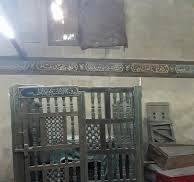
Sh. Yahya Qadiri
سيدي يحيى القادري بن وفا ابن سيدي شهاب الدين أحمد بن وفا بن القطب الكبير سيدي أبي التداني محمد وفا رضى الله عنهd.857 H. in Cairo
Bio: Sh. Yaqut al-`Arshi
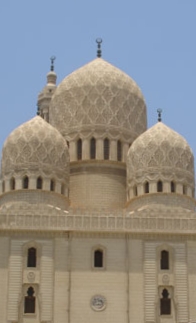
Sayyidi Sh. Yaqut al-`Arshi
الشيخ سيدي ياقوت العرشي
b 627 – d. 707 H. (1307 CE) in Alexandria – qaddasa Allah sirrahu
Teacher of Ibn `Ata Allah al-Sakandari after Sheikh Abul `Abbas al-Mursi
.
English
1. From Al-Sha`rani: Al-Tabaqat al-Kubra (see below)
2. From Kuhin: Tabaqat al-Shadhiliyya (see below)
Transl. by bmk / Damas Cultral Society © 2008 – view original page
Sheikh Yaqut al-`Arshi– may Allah ta’ala be pleased with him – was the imam of the spiritual sciences, a worshipper and ascetic, and one of the greatest of those who took from Sheikh Abul`Abbas al-Mursi (radia Allah `anhu). The day he was born, in the lands of Habasha, Sheikh Abul`Abbas was informed of it, and he made a `asida for him. It was then summer time in Alexandria, and people said to him: “But `asida is only for winter time.” He answered: “This `asida is for your brother Yaqut al- `Arshi, who is born in the land of Habasha, and will come to you.” And so it happended.
Yaqut al-`Arshi was the one who interceded for Sheikh Shams al-Din ibn al-Lubban (who disavowed Sheikh Ahmad al-Badawi, so that all his good deeds and rank were nullfied). Sheikh Shams al-Din had sought intersession from all the awlia, but Sheikh Ahmad al-Badawi did not accept it from anyone. Yaqut al-`Arshi then travelled from Alexandria to Tanta, and asked Sheikh Ahmad al-Badawi to change his opinion about Sheikh Shams al-Din, so that his rank may be returned to him, and Sheikh Ahmad al-Badawi complied to his request. – Later, Sheikh Yaqut al-`Arshi gave his daughter in marriage to Shams al-Din ibn al-Lubban, who made it his will , when he died, to be buried under her feet, out of respect for her father Sheikh Yaqut al-Arshi.
He was called al-`Arshi, because his heart was constantly under the Throne of Allah – only his body was on the earth. It has also been said that it is because he heard the adhan from the Angels carrying the Throne of Allah.
He interceded even for the animals. Once, when he was sitting in the circle of the fuqara, a dove came and sat on his shoulder, and said some secret words in his ear. Then he said: “Bismi Allah, we will send one of the fuqara with you.” The dove said: “Noone except you will satsify my need.” So he rode his mule from Alexandira to Misr al-`Atiqa (Cairo) and entered the Mosque of `Amr, saying: “Let me meet the Muadhdhin”. The Muadhdhin was sent for, and Sheikh Yaqut said to him: “This dove came to Alexandria and told me that you kill its young ones every time she gives birth to them in the Minaret.” The Muadhdhin said: “Yes, that is true. I have killed them several times.” Sheikh Yaqut said: “Don’t do it again.” The Muadhdhin said: “I repent to Allah ta`ala.” After that Sheikh returned to Alexandria – may Allah ta’ala be pleased with him.
His virtues and glorious deeds are many and well known among the Shadhilis i Egypt and elsewhere. He passed away in Alexandria year 707 H. – may Allah ta’ala be well pleased with him.
Translated by Ahmad Ali al-Adani as “Biographies of Prominent Shadhilis”
He is Abu al-Durr b. ‘Abdullah al-Habashi [1]. He was a virtuous shaykh who commanded awe and reverence. An imam of gnosis, he was a devout worshipper and ascetic. He is counted among the most illustrious disciples of Shaykh Abu’l-‘Abbas al-Mursi. On the day of his birth in Abyssinia, Shaykh Abu’l-‘Abbas was informed of it. It was a summer day in Alexandria and he prepared ‘asida [a pasty thick gruel made from wheat flour and clarified butter for the newborn]. When told that ‘asida was only prepared in winter, he retorted, ‘This is the ‘asida of your brother Yaqut, who is born in Abyssinia, and will come to you.’ And so it happened.
He was from those who interceded on behalf of Shaykh Shams al-Din b. al-Lubban, when the latter disavowed Sidi Ahmad al-Badawi, resulting in his own knowledge and spiritual state being taken away. Shaykh-Shams al-Din b. al-Lubban had sought the intercession of all other saints.149
He was called al-‘Arshi because his heart was constantly under the Throne [Arsh], only his body being on the earth. It is also said that he would hear the adhan from the angels carrying the Throne.
He even interceded on behalf of animals. One day, when he was sitting in a circle of dervishes, a dove came and sat on his shoulder, and then whispered some secret into his ear. He said: `Bismi Allah, we will send one of the devotees with you.’ The dove told him: ‘Only you will satsify my need.’ So he mounted his mule and journeyed from Alexandira to old Cairo and entered the Mosque of ‘Amr, saying: ‘Let me meet the caller to prayer [muadhdhin].’ The muadhdhin was sent for, and the shaykh said to him: ‘This dove told me in Alexandria that you kill its chicks whenever she gives birth to them in the minaret.’ The muadhdhin said: ‘Yes, this is true. I have killed them on several occasions.’ The shaykh said: ‘Don’t do it again.’ The muadhdhin said: ‘I repent to Allah Most High.’ After this, the shaykh returned to Alexandria, may Allah Most High be pleased with him.
He has a legion of virtues that are well-known among members of the Shadhili Path in Egypt and elsewhere. He died in Alexandria on 18 Jumada II AH 707. He was eighty years old. His shrine in Alexandria — may Allah have mercy on him — is a site of pilgrimage for adults and children seeking spiritual graces. May Allah benefit us through him.
Footnotes:
[1] See his biography in Tabaqat al-Shadhiliyyat al-Kubra by Muhyi al-Din al-Tu`mi (p. 222).
عربي
2. From Kuhin: Tabaqat al-Shadhiliyya: View book | Download | Chapter [25] (see below)
(627- 707)
أبو الدُّرّ بن عبد الله الحبشي كان شيخًا صالحًا، ذا هيبةٍ ووقار، إمامًا في المعارف عابدًا زاهدًا، وهو من أجل من أخذ عن الشيخ أبي العباس المُرسي رضى الله عنه.
وأخبر به سيدي أبو العباس رضى الله عنه يوم ولدَ ببلاد الحبشة، وصنعَ له عصيدةً([2]) أيام الصيف في الإسكندرية، فقيل: إن العصيدةَ لا تكون إلا في أيام الشتاء. فقال: هذه عصيدةُ أخيكم ياقوت، ولد ببلاد الحبشة، سوف يأتيكم. فكان الأمر كما قال.
وهو الذي شفع في الشيخ شمس الدين بن اللبان، لما أنكرَ على سيدي أحمد البدوي رضى الله عنه وسلبَ علمَه وحاله، بعد أن تَوسَّلَ بجميع الأولياء.
وسُمِّي العرشي لأنَّ قلبَه كان لم يزل تحت العرش، وما في الأرض إلا جسده، وقيل لأنَّه كان يسمعُ أذانَ حملة العرش.
وكان رضى الله عنه يشفعُ حتَّى في الحيوانات، وجاءته مرةً يمامةٌ([3])، فجلست على كتفه وهو جالس في حلقة الفقراء، وأسرَّتُ إليه شيئًا في أُذنه، فقال: بسم الله، ونرسل معك أحدًا من الفقراء. فقالت: ما يكفيني إلا أنت. فركب بغلةً من الإسكندرية، وسافر إلى مصر العتيقة، ودخل إلى جامع عمرو، فقال: اجمعوني على فلان المؤذن، فأرسلوا وراءه، فجاء، فقال: هذه اليمامة أخبرتني بالإسكندرية أنَّك تذبح فراخها كلَّما تُفرّخ في المنارة. فقال: صدقت، قد ذبحتُهم مرارًا. فقال: لا تعدْ. فقال: تبتُ إلى الله تعالى ورجع الأستاذ إلى الإسكندرية، رضي الله تعالى عنه.
ومناقبه رضى الله عنه كثيرة مشهورة بين الطائفة الشاذلية بمصر وغيرها.
توفي رضى الله عنه بالإسكندرية ثامن عشر جمادى الآخرة سنة سبع مئة وسبع عن ثمانين عامًا، ومقامه بالإسكندرية رحمه الله كعبةُ الزُّوار، تقصده الناس كبيرُهم وصغيرهم للزيارة والتبرُّك، نفعنا الله به.
([1]) الشيخ ياقوت العرشي المقيم بالإسكندرية، أبو الدر بن عبد الله الحبشي، إمامًا في المعارف، عابدًا، زاهدًا ولد سنة 627هـ بالحبشة. وتوفي بالإسكندرية سنة 707هـ [«طبقات الشاذلية الكبرى» ص222].
([2]) العصيدةُ: دقيق يخلط بالسمن ثم يطبخ.
([3]) اليمامةُ: جنسٌ من الطير من الفصيلة الحمامية ورتبة الحماميات.
Photos

Mosque of Sheikh Yaqut al-´Arshi in Alexandria
Map
Interceding
Bio: The Kettani Family
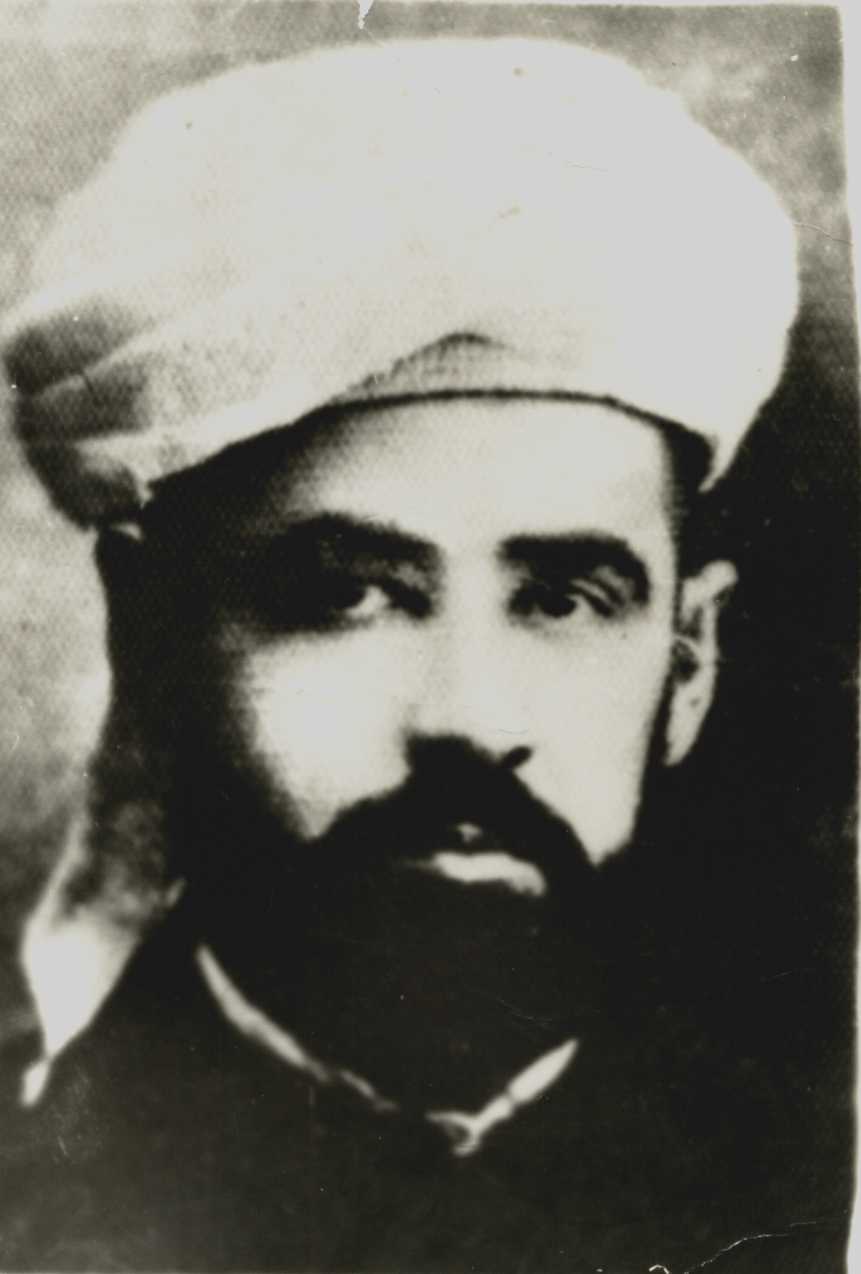
Al-Sayyid al-Sheikh
Muhammad ibn Ja`far al-Kettani al-Hasani al-Idrisi
b. 1273 in Fas – d. 1345 in Fas
Bio: `Abd Allah b. Ja`far al-Sadiq

`Abd Allah b. Ja`far al-Sadiq (“al-Aftah”)
d. 149 H. in Damascus
radiya Allah anhu
﷽
English
Abdullah al-Aftah ibn Ja’far al-Sadiq was the eldest surviving son of Ja’far al-Sadiq, and the full-brother of Isma’il ibn Jafar. Abdullah’s title “al-Aftah” derives from the Arabic words “aftah al-ra’s” (broad-headed) or “aftah al-rijlayn” (broad-footed) used to describe his appearance.
During the lifetime of his father, Abdullah al-Aftah had supported the revolt of his relative Muhammad ibn Abdallah An-Nafs Az-Zakiyya.
His father, Ja’far ibn Muhammad al-Sādiq born in 702 CE or 17th Rabi al-Awwal 83 H is said to be highly respected for his great Islamic scholarship, pious character, and academic contributions. As a child, Ja’far Al-Sadiq studied under his grandfather, Zayn al-Abidin. After his grandfather’s death, he studied under and accompanied his father, Muhammad al-Baqir, until Muhammad al-Baqir died in 733.
Ja’far Al-Sadiq became well versed in Islamic sciences, including Hadith, Sunnah, and the Qur’an. In addition to his knowledge of Islamic sciences, Ja’far Al-Sadiq was also an adept in natural sciences, mathematics, philosophy, astronomy, anatomy, alchemy and other subjects.
The foremost Islamic alchemist, Abu Musa Jabir ibn Hayyan, known in Europe as Geber, was Ja’far Al-Sadiq’s most prominent student. Ja’far Al-Sadiq was known for his liberal views on learning, and was keen to have discourse with Scholars of other views.
Abū Ḥanīfa was an Islamic scholar and Jurist. He was a student of Ja’far Al-Sadiq, as was Imam Malik ibn Anas, who quotes 12 hadiths from Imam Jafar Sadiq in his famous Al-Muwatta.
